- Try for free

How to Write an Essay Outline + Essay Outline Examples
Download for free, how to write an essay outline + essay outline examples .
Writing an essay can seem like a daunting task, but one of the best ways to tackle this challenge is to organize your ideas into a well-structured essay outline. This guide will walk you through the process of creating an essay outline, complete with essay outline examples, to ensure your next essay is a masterpiece.
We’ve compiled a variety of essay outline examples to help you understand how to structure your own essay. We'll cover persuasive essays, narrative essays, descriptive essays, expository essays, and even provide a sample research paper outline. Each example will provide you with an idea of how to lay out the structure and details for each type of essay.
Looking for a printable list of essay outline examples? Our printable PDF features essay outline examples and templates that your students can use as examples when writing research papers, or as a supplement for an essay-writing unit
Why write an essay outline?
An outline serves as the skeleton of your essay, giving you a clear and organized path to articulate your thoughts. Not only does it make writing an essay significantly easier, but it also allows you to present your arguments coherently and effectively.
An essay outline will help you organize your main ideas and determine the order in which you are going to write about them.

Types of essay outlines
Several types of essay outlines can be used when writing an essay. The two most common types are the alphanumeric outline and the decimal outline.
An alphanumeric outline typically uses Roman numerals, capital letters, Arabic numerals, and lowercase letters, in that order. Each level provides a different level of specificity. This structure is a very effective way to think through how you will organize and present the information in your essay. It also helps you develop a strong argumentative essay.
Alternatively, a decimal outline uses only numbers, and each subsection is a decimal subdivision of the main section. This type of outline is often used in scientific papers.
Persuasive essay outline example
In the following section, we'll explore a persuasive essay outline example on competitive swimming. The purpose of a persuasive essay is to convince the reader of a particular point of view or idea, using compelling arguments and evidence.
In this case, the argument is that competitive swimming is an ideal sport for kids. The essay will present a series of arguments to support this view, demonstrating the various benefits of competitive swimming for children.
Competitive Swimming, an Ideal Sport for Kids
Introduction
Start your argumentative essay outline by stating your point of view and/or presenting your persuasive argument.
Thesis: Competitive swimming is a great alternative to other youth sports.
Body Paragraph 1
Introduce your primary persuasive argument and provide supporting details in your argumentative essay outline.
Topic Sentence: Competitive swimming provides the same benefits as other sports.
- Detail Sentence 1: It is good exercise and builds muscular strength.
- Detail Sentence 2: It promotes cooperation among team members, especially in relays.
Body Paragraph 2
Introduce a secondary argument and provide supporting details.
Topic Sentence: Competitive swimming provides some unique additional benefits.
- Detail Sentence 1: Swimming is an important skill that can be used forever.
- Detail Sentence 2: Swimming poses a reduced risk of injury.
- Detail Sentence 3: Each swimmer can easily chart his or her own progress.
Conclude your essay writing with a summary of the thesis and persuasive arguments. Brainstorming details that support your point-of-view is a great way to start before creating your outline and first draft.
Concluding Sentence: There are many reasons why competitive swimming is a great alternative to other youth sports, including...
Narrative essay outline example
In the following section, we will examine a narrative essay outline example titled "How Losing a Swim Meet Made Me a Better Swimmer." Narrative essays aim to tell a story, often about a personal experience, to engage the reader and convey a particular point or lesson.
In this case, the narrative revolves around the author's personal journey of improvement and self-discovery through swimming. The essay will illustrate how an initial setback served as a catalyst for significant improvement and personal growth.
How Losing a Swim Meet Made Me a Better Swimmer
Introduce the subject of your narrative essay using a thesis statement and a plan of development (POD).
Thesis: The first time I participated in a competitive swim meet, I finished in last place. With more focused training and coaching, I was able to finish 2nd in the State Championship meet.
Plan of development: I was very disappointed in my results from the first meet, so I improved my training and fitness. This helped me swim better and faster, which helped me to greatly improve my results.
Set the scene and provide supporting details. Again, start by brainstorming different ways to begin; then go ahead and craft an outline and a first draft.
Topic Sentence: I was embarrassed at finishing last in my first competitive swim meet, so I began working on ways to improve my performance.
- Detail Sentence 1: I spent extra time with my coach and the team captains learning how to improve my technique.
- Detail Sentence 2: I started running and lifting weights to increase my overall fitness level.
Provide additional supporting details, descriptions, and experiences to develop your general idea in your essay writing.
Topic Sentence: Over time, my results began to improve and I was able to qualify for the state championship meet.
- Detail Sentence 1: My technique and fitness level made me faster and able to swim longer distances.
- Detail Sentence 2: I steadily got better, and I began winning or placing in the top 3 at most of my meets.
- Detail Sentence 3: My results improved to the point that I was able to qualify for the state championship meet.
Body Paragraph 3
The next step in the writing process is to provide additional supporting details, descriptions, and experiences. You can then divide them up under different headings.
Topic Sentence: With my new confidence, techniques, and fitness level, I was able to finish 2nd at the state championship meet.
- Detail Sentence 1: I was able to swim well against a higher level of competition due to my training and technique.
- Detail Sentence 2: I was no longer embarrassed about my last-place finish, and was able to use it as motivation!
Conclude the narrative essay with a recap of the events described or a reflection on the lesson learned in the story. Briefly summarize the details you included under each heading.
Concluding Sentence: I used my last-place finish in my first competitive swim meet as motivation to improve my performance.
Descriptive essay outline example
We will now delve into a descriptive essay outline example. Descriptive essays aim to create a vivid and detailed description of a person, place, object, or event to paint a picture for the reader. The intention is to immerse the reader in the subject matter fully.
In this case, the essay provides an in-depth description of a visit to the Hockey Hall of Fame in Toronto. The essay will use sensory and descriptive details to create a vivid and memorable experience for the reader.
Visiting the Hockey Hall of Fame
Introduce the subject of your descriptive essay with a thesis statement covering the person, place, object, etc. you are writing about.
Thesis: The Hockey Hall of Fame is full of sights, sounds, and experiences that will delight hockey fans of all ages.
Set the scene and provide factual details.
Topic Sentence: The Hockey Hall of Fame is located in Toronto, Canada and features exhibits from amateur and professional hockey.
- Detail Sentence 1: The Hall is located in downtown Toronto and is visited by 1 million people every year.
- Detail Sentence 2: You can see exhibits ranging from the early beginnings of the sport to the modern NHL and Olympics.
Provide additional sensory details, descriptions, and experiences.
Topic Sentence: There are many types of exhibits and shows, including activities you can participate in.
- Detail Sentence 1: Player statues, plaques, and jerseys decorate the walls in every room of the Hall.
- Detail Sentence 2: Many of the exhibits have movies and multimedia activities that make you feel like you're part of the game.
- Detail Sentence 3: You can even practice shooting pucks on virtual versions of some of the game's greatest goalies!
Conclude the essay with a paragraph that restates the thesis and recaps the descriptive and sensory details.
Concluding Sentence: The Hockey Hall of Fame is an experience that combines the best sights, sounds and history of the game in Toronto.
Expository essay outline example
In the following section, we will explore an example of an expository essay. An expository essay aims to explain or describe a topic using logic. It presents a balanced analysis of a topic based on facts—with no references to the writer’s opinions or emotions.
For this example, the topic is "Why The School Year Should be Shorter". This essay will use logic and reason to demonstrate that a shorter school year could provide various benefits for students, teachers, and school districts.
Why The School Year Should be Shorter
Introduce the primary argument or main point of an expository essay, or other types of academic writing, using a thesis statement and context.
Thesis: The school year is too long, and should be shortened to benefit students and teachers, save districts money, and improve test scores and academic results. Other countries have shorter school years, and achieve better results.
Describe the primary argument and provide supporting details and evidence.
Topic Sentence: A shorter school year would benefit students and teachers by giving them more time off.
- Detail Sentence 1: Students and teachers would be able to spend more time with their families.
- Detail Sentence 2: Teachers would be refreshed and rejuvenated and able to teach more effectively.
Provide additional supporting details and evidence, as in this essay outline example.
Topic Sentence: A shorter school year would save school districts millions of dollars per year.
- Detail Sentence 1: Districts could save money on energy costs by keeping schools closed longer.
- Detail Sentence 2: A shorter school year means much lower supply and transportation costs.
- Detail Sentence 3: Well-rested and happy students would help improve test scores.
Provide additional or supplemental supporting details, evidence, and analysis, as in the essay outline example.
Topic Sentence: Shortening the school year would also provide many benefits for parents and caregivers.
- Detail Sentence 1: A shorter school year would mean less stress and running around for parents.
- Detail Sentence 2: Caregivers would have more balance in their lives with fewer days in the school year.
Conclude the essay with an overview of the main argument, and highlight the importance of your evidence and conclusion.
Concluding Sentence: Shortening the school year would be a great way to improve the quality of life for students, teachers, and parents while saving money for districts and improving academic results.
Sample research paper outline
Now let’s dive into a research paper outline. Unlike a typical essay, a research paper presents a thorough and detailed study on a specific topic. However, it shares the same foundation with an essay in terms of structuring the ideas logically and coherently. The outline for a research paper includes an introduction, a series of topic points that cover various aspects of the main topic, and a conclusion.
This research paper will explore the background of Mt. Everest, the major explorers who attempted its summit, and the impact of these expeditions on Mt. Everest and the local community.
The Conquest of Mt. Everest
- Location of Mt. Everest
- Geography of the Surrounding Area
- Height of the mountain
- Jomolungma (Tibetan name)
- Sagarmatha (Nepalese name)
- The number of people who have climbed Everest to date
- First to reach the summit (1953)
- Led a team of experienced mountain climbers who worked together
- Norgay was an experienced climber and guide who accompanied Hillary
- Sherpas still used to guide expeditions
- Leader of the failed 1996 expedition
- Led group of (mainly) tourists with little mountain climbing experience
- Loss of trees due to high demand for wood for cooking and heating for tourists.
- Piles of trash left by climbing expeditions
- Expedition fees provide income for the country
- Expeditions provide work for the Sherpas, contributing to the local economy.
- Introduction of motor vehicles
- Introduction of electricity
The Everest essay outline template is based on a research paper submitted by Alexandra Ferber, 9th grade.
Happy writing!
Writing an essay outline is a crucial step in crafting a well-structured and coherent essay. Regardless of the type of essay - be it persuasive, narrative, descriptive, expository, or a research paper - an outline serves as a roadmap that organizes your thoughts and guides your writing process. The various essay outline examples provided above serve as a guide to help you structure your own essay. Remember, the key to a great essay lies not just in the content but in its organization and flow. Happy writing!
Featured High School Resources

Related Resources

How to Write an Essay Outline with MLA and APA Styles

Got a great essay idea, but feel like sorting out your thoughts is as tough as untying knotted headphones from your backpack? No worries! We've all felt that way.
Whether you're staring down a blank page or drowning in a sea of scattered thoughts, we've got your back. In this article, we're going to break down the writing process of an essay outline into simple, easy-to-follow steps. Plus, we'll cover specific formatting guidelines for both MLA and APA styles, making sure your essay looks polished and professional.
What Is an Outline?
Let's start from the basics. An essay outline helps you arrange your thoughts and plan your essay before you begin writing. It can be your strategy guide to beat writer's block. Instead of wandering around in your paragraphs, hoping everything falls into place, an outline gives your essay format a clear path.
Here's how it works: You write down your main ideas, arguments, and supporting details in a logical order. This keeps you focused and ensures your essay flows smoothly from start to finish. It also makes writing much easier.
Now, you might wonder, 'Why do I need essay outlines? Can't I just write and see where it goes?' Well, you could, but it's risky. Without a format plan, you might stray off-topic, get lost in unrelated ideas, or end up with a confusing mess that confuses your readers.
So, whether you're writing a persuasive essay, a personal story, or an APA or MLA research paper, a good outline is essential. It saves time and frustration and helps you create a well-organized and clear essay that gets your message across.
Wanting a Perfectly Polished Essay?
Let’s breeze through your writing assignments with ease!
How to Write an Essay Outline in 4 Simple Steps
Now, before you start outlining, let our coursework writing service give you some extra help to begin. Just follow these four steps to create an outline format that makes the rest of your writing easy. These steps break down the process into simple parts, making it easier for you to understand and follow along.
.webp)
Set Your Goal Clearly
When setting your goal, ask yourself: What do I want to achieve with this essay? Is it to convince the reader of a certain viewpoint, educate them on a topic, or perhaps entertain them with a captivating story? Clarifying your goal helps you stay focused throughout the writing process and ensures that every part of your essay works towards achieving that goal.
It's also important to consider your audience and what you aim for them to grasp from reading your essay. For example, if you're working on the Divine Comedy summary , think about whether your audience is familiar with the text or if they're approaching it for the first time. Consider their interests—are they more interested in literary analysis, historical context, or thematic exploration? Additionally, be mindful of any potential biases they might have based on their background or prior knowledge.
Remove Unnecessary Details
In this step, it's time to prioritize and trim down your ideas. Take a close look at all the points you've brainstormed and ask yourself: Which ones are absolutely crucial for supporting my main argument or thesis statement? Anything that doesn't directly contribute to your goal should be cut. This streamlines your essay, keeping it focused and concise. Remember, clarity is key. Readers shouldn't have to sift through irrelevant information to understand your main points. So, be ruthless in eliminating anything that doesn't serve your purpose.
List the Main Ideas for Each Paragraph
Here, you're breaking down your essay format into manageable chunks. For each paragraph, identify the main idea or point you want to convey. These main ideas serve as the backbone of your essay, guiding the flow of your argument and ensuring that each paragraph contributes meaningfully to the overall narrative.
Consider how each point relates to your thesis statement and supports your overall goal. By clearly listing the main points of each paragraph in your essay outline, you'll create a roadmap for your writing that makes it easier for both you and your readers to follow along.
Organize Your Outline with a Simple Template
Now that you have identified your main ideas, it's time to put everything together in a structured format. Use a simple template by our business essay writing services to organize your outline in a way that flows logically from start to finish.
Begin with an introduction to set the stage and grab the reader's attention. Then, outline your body paragraphs to present your arguments or ideas in a clear and organized manner. Each paragraph should focus on one main point, supported by evidence or examples. Finally, conclude your format with a summary that wraps everything up neatly and reinforces your main thesis.
By organizing your format in this way, you'll create a roadmap for your essay that makes it easier to write and ensures that your ideas are presented cohesively.
MLA Outline Format
The MLA format essay outline serves as the skeleton upon which your ideas will flesh out into a cohesive narrative. Here's a breakdown of the key components and formatting rules to keep in mind:
- Paper Specifications : Your MLA paper should be standard letter size (8.5x11 inches), with one-inch margins around the entire page. The running head, if included, should be within the margin. This ensures uniformity and readability across different platforms.
- Indentation and Spacing : Start each sentence with an indentation that's half an inch from the left margin. Maintaining double spacing throughout your MLA outline enhances readability and leaves ample space for annotations and revisions. The recommended font size is 12-point, though 11-point or 11.5-point is acceptable. Consistency is key here.
- Securing Your Outline : While it might seem trivial, ensuring your MLA outline is securely fastened in the upper left corner—be it with a stapler, paper clip, or binder clip—helps maintain professionalism and organization.
- Title and Thesis Statement : Center the title of your MLA paper at the top of the outline. Directly below, write your thesis statement, setting it apart by capitalizing the first letter of each word and ending with a colon. This establishes the overarching argument or main point of your essay.
- Headings and Subheadings : Use a hierarchical system for headings and subheadings to denote the structure of your MLA essay. Major sections are indicated with Roman numerals (I, II, III), while subcategories are marked with uppercase letters (A, B, C). Further subdivisions follow a pattern of Arabic numbers (1, 2, 3) and lowercase letters (a, b, c), each ending with a period for clarity.
APA Outline Format
Understanding the structure of the APA outline format is key to organizing your ideas effectively. Here's a closer look at the various formats:
Basic APA Format :
- Roman numerals denote main headings.
- Capital letters signify first-level subheadings.
- Arabic numerals (1-9) are used within those subheadings.
- Lowercase letters are utilized beneath Arabic numeral subheadings.
- Arabic numerals within parentheses further delineate sub-points.
The full sentence outline mirrors this structure, replacing sentence fragments with complete sentences at each level.
APA Decimal Outline :
- This APA format is simpler, breaking headings into paragraphs and numbering them with Arabic numerals.
- Each heading is numbered sequentially, starting with 1.0.
- Paragraphs within headings are indicated by a decimal followed by a sequential number (e.g., 1.1, 1.2).
- Points or sentences within paragraphs are further delineated by additional decimals (e.g., 1.1.1, 1.1.2).
For instance, under the first heading, the first paragraph's first sentence would be numbered 1.1.1, with subsequent sentences following suit.
Outline Examples
Below are the sample outlines for both formatting styles. You'll notice that the MLA outline has a more narrative style, while the APA outline follows a structured format with distinct headings and subheadings.
In MLA, main sections are marked with Roman numerals and subsections with capital letters, whereas APA uses numbers and letters for different heading levels. Additionally, APA includes sections for methods and results, which are typical in scientific research papers, while MLA format typically omits these sections.
Meanwhile, if you're tempted to pay someone to write my paper , remember we're here to whip up stellar samples in any format you desire!
MLA Outline Example
Apa outline example, final recap.
That's all there is to it! We hope you now have a solid grasp of APA and MLA format outlines. Despite their apparent similarities, there are some notable differences between the two. Now that you're armed with this knowledge, go ahead and tackle your outline assignments like a pro!
Struggling to Wrangle Your Thoughts into a Coherent Essay?
Let us do the heavy lifting for you!

is an expert in nursing and healthcare, with a strong background in history, law, and literature. Holding advanced degrees in nursing and public health, his analytical approach and comprehensive knowledge help students navigate complex topics. On EssayPro blog, Adam provides insightful articles on everything from historical analysis to the intricacies of healthcare policies. In his downtime, he enjoys historical documentaries and volunteering at local clinics.

Related Articles
%20(3).webp)
How to Outline a College Essay
When writing a college essay , some students take whatever is in their head at the moment, pour it all out on the page, and turn it in.
I'm sure you can sympathize with this method. You might even think that skipping the outline step and going straight into the essay will save time and help you finish this assignment ASAP so you can move on with your life.

Unfortunately, there's a problem with this logic. If you skip straight to the essay and forego the planning, it's likely you'll need more time to write, edit, and make sure that your essay includes everything you need.
The best college essays require an outline to help organize your thoughts before you begin to write.
Your outline will help you develop a more organized essay that makes sense and is logical to your reader. It can also help you better develop your ideas and actually save you time in the long run.
What are the steps for creating an outline?
Good news: it's not very difficult to put together an outline for an essay . Here are the basic steps you should follow:
1. Brainstorm and Select a Topic
Start by listing all of the topics you're considering. Don't judge the topics you're writing; just get as many of your thoughts on paper as possible. Set a timer for five minutes and list every topic that pops into your head.
Once you've created a list, look for topics that seem like the best fit for you and the assignment you've been given. Maybe a few topics could even be combined to create one larger, more developed topic.
2. Brainstorm some Supporting Details
Once you've chosen your topic, it's time to see if you have enough details to support this topic. A good, old-fashioned web of ideas can help you see how your thoughts are connected to your main idea.
Write your topic in the middle of a page and circle it. Draw lines and circles out to ideas that support this main topic. Again, don't judge your thoughts; just let them flow. You can narrow them down later. For now, you want to see if this subject is meaty enough to stick with and if you can relate several ideas to the main topic.
3. Label your Ideas. Where would they go in an outline template?
A basic outline format includes an introduction, a body of supporting ideas, and a conclusion. You will eventually take your brainstorm of thoughts and organize this chaos into a neat, orderly outline. This will help you place your ideas in a logical order and help eliminate some ideas that aren't as strong or that don't quite belong in your essay.
Take a look at your thoughts on your web of ideas paper and label them "I" if you think they help introduce your idea, "S" if they are great supporting facts for your main idea, and "C" if you think they help conclude your thoughts. If an idea doesn't seem to fit anywhere, you can put an "X" on it and consider saving it for a later essay.
4. Use an Outline Example to Plot your Essay
If the above steps intimidate you, you can always take a few minutes to look at outline examples to give you a better idea of what you're aiming for.

You can even try plugging your thoughts into an outline template . Here's a basic one to get you started:
- Introduction (usually one paragraph) a) Hook—get your reader's attention b) Preview the main idea c) State your thesis
- Body of supporting ideas (Usually three paragraphs —one for each main supporting idea) a) Supporting detail #1 (with examples, stories, other details) b) Supporting detail #2 (with examples, stories, other details) c) Supporting detail #3 (with examples, stories, other details)
- Conclusion (usually one paragraph) a) Restate and reflect on your main idea/thesis b) Tie your ideas together c) Wrap it up in a coherent fashion
5. Start Writing!
Once you've plotted out your thoughts, beginning the writing process will be much smoother and easier for you. Your order is ready, your thoughts are organized, and your details are developed. Most of your essay is already written for you now.
The art of writing a college essay can be overwhelming at first. However, using an outline can help organize your essay in a way that makes it much easier to write and much nicer to read. Taking the time to brainstorm, plot out your thoughts, and place them logically into an outline will pay off in the future as it will save you time and help you create a well-crafted essay.
How to Write Essay Titles and Headers
Don’t overlook the title and section headers when putting together your next writing assignment. Follow these pointers for keeping your writing organized and effective.
101 Standout Argumentative Essay Topic Ideas
Need a topic for your upcoming argumentative essay? We've got 100 helpful prompts to help you get kickstarted on your next writing assignment.
Writing a Standout College Admissions Essay
Your personal statement is arguably the most important part of your college application. Follow these guidelines for an exceptional admissions essay.
Essay Writing Guide
Essay Outline
Last updated on: Jun 10, 2023
A Complete Essay Outline - Guidelines and Format
By: Nova A.
13 min read
Reviewed By: Melisa C.
Published on: Jan 15, 2019

To write an effective essay, you need to create a clear and well-organized essay outline. An essay outline will shape the essay’s entire content and determine how successful the essay will be.
In this blog post, we'll be going over the basics of essay outlines and provide a template for you to follow. We will also include a few examples so that you can get an idea about how these outlines look when they are put into practice.
Essay writing is not easy, but it becomes much easier with time, practice, and a detailed essay writing guide. Once you have developed your outline, everything else will come together more smoothly.
The key to success in any area is preparation - take the time now to develop a solid outline and then write your essays!
So, let’s get started!

On this Page
What is an Essay Outline?
An essay outline is your essay plan and a roadmap to essay writing. It is the structure of an essay you are about to write. It includes all the main points you have to discuss in each section along with the thesis statement.
Like every house has a map before it is constructed, the same is the importance of an essay outline. You can write an essay without crafting an outline, but you may miss essential information, and it is more time-consuming.
Once the outline is created, there is no chance of missing any important information. Also, it will help you to:
- Organize your thoughts and ideas.
- Understand the information flow.
- Never miss any crucial information or reference.
- Finish your work faster.
These are the reasons if someone asks you why an essay outline is needed. Now there are some points that must be kept in mind before proceeding to craft an essay outline.

Easily Outline Your Essays In Seconds!
Prewriting Process of Essay Outline
Your teacher may ask you to submit your essay outline before your essay. Therefore, you must know the preliminary guidelines that are necessary before writing an essay outline.
Here are the guidelines:
- You must go through your assignments’ guidelines carefully.
- Understand the purpose of your assignment.
- Know your audience.
- Mark the important point while researching your topic data.
- Select the structure of your essay outline; whether you are going to use a decimal point bullet or a simple one.

Paper Due? Why Suffer? That's our Job!
How to Write an Essay Outline in 4 Steps
Creating an essay outline is a crucial step in crafting a well-structured and organized piece of writing. Follow these four simple steps to create an effective outline:
Step 1: Understand the Topic
To begin, thoroughly grasp the essence of your essay topic.
Break it down into its key components and identify the main ideas you want to convey. This step ensures you have a clear direction and focus for your essay.
Step 2: Brainstorm and Gather Ideas
Let your creativity flow and brainstorm ideas related to your topic.
Jot down key pieces of information, arguments, and supporting evidence that will strengthen your essay's overall message. Consider different perspectives and potential counterarguments to make your essay well-rounded.
Step 3: Organize Your Thoughts
Now it's time to give structure to your ideas.
Arrange your main points in a logical order, starting with an attention-grabbing introduction, followed by body paragraphs that present your arguments.
Finally, tie everything together with a compelling conclusion. Remember to use transitional phrases to create smooth transitions between sections.
Step 4: Add Depth with Subpoints
To add depth and clarity to your essay, incorporate subpoints under each main point.
These subpoints provide more specific details, evidence, or examples that support your main ideas. They help to further strengthen your arguments and make your essay more convincing.
By following these four steps - you'll be well on your way to creating a clear and compelling essay outline.
Essay Outline Format
It is an easy way for you to write your thoughts in an organized manner. It may seem unnecessary and unimportant, but it is not.
It is one of the most crucial steps for essay writing as it shapes your entire essay and aids the writing process.
An essay outline consists of three main parts:
1. Introduction
The introduction body of your essay should be attention-grabbing. It should be written in such a manner that it attracts the reader’s interest. It should also provide background information about the topic for the readers.
You can use a dramatic tone to grab readers’ attention, but it should connect the audience to your thesis statement.
Here are some points without which your introduction paragraph is incomplete.
To attract the reader with the first few opening lines, we use a hook statement. It helps engage the reader and motivates them to read further. There are different types of hook sentences ranging from quotes, rhetorical questions to anecdotes and statistics, and much more.
Are you struggling to come up with an interesting hook? View these hook examples to get inspired!
A thesis statement is stated at the end of your introduction. It is the most important statement of your entire essay. It summarizes the purpose of the essay in one sentence.
The thesis statement tells the readers about the main theme of the essay, and it must be strong and clear. It holds the entire crux of your essay.
Need help creating a strong thesis statement? Check out this guide on thesis statements and learn to write a statement that perfectly captures your main argument!
2. Body Paragraphs
The body paragraphs of an essay are where all the details and evidence come into play. This is where you dive deep into the argument, providing explanations and supporting your ideas with solid evidence.
If you're writing a persuasive essay, these paragraphs will be the powerhouse that convinces your readers. Similarly, in an argumentative essay, your body paragraphs will work their magic to sway your audience to your side.
Each paragraph should have a topic sentence and no more than one idea. A topic sentence is the crux of the contents of your paragraph. It is essential to keep your reader interested in the essay.
The topic sentence is followed by the supporting points and opinions, which are then justified with strong evidence.
3. Conclusion
When it comes to wrapping up your essay, never underestimate the power of a strong conclusion. Just like the introduction and body paragraphs, the conclusion plays a vital role in providing a sense of closure to your topic.
To craft an impactful conclusion, it's crucial to summarize the key points discussed in the introduction and body paragraphs. You want to remind your readers of the important information you shared earlier. But keep it concise and to the point. Short, powerful sentences will leave a lasting impression.
Remember, your conclusion shouldn't drag on. Instead, restate your thesis statement and the supporting points you mentioned earlier. And here's a pro tip: go the extra mile and suggest a course of action. It leaves your readers with something to ponder or reflect on.
5 Paragraph Essay Outline Structure
An outline is an essential part of the writing as it helps the writer stay focused. A typical 5 paragraph essay outline example is shown here. This includes:
- State the topic
- Thesis statement
- Introduction
- Explanation
- A conclusion that ties to the thesis
- Summary of the essay
- Restate the thesis statement
Tough Essay Due? Hire Tough Writers!
Essay Outline Template
The outline of the essay is the skeleton that you will fill out with the content. Both outline and relevant content are important for a good essay. The content you will add to flesh out the outline should be credible, relevant, and interesting.
The outline structure for the essay is not complex or difficult. No matter which type of essay you write, you either use an alphanumeric structure or a decimal structure for the outline.
Below is an outline sample that you can easily follow for your essay.
Essay Outline Sample
Essay Outline Examples
An essay outline template should follow when you start writing the essay. Every writer should learn how to write an outline for every type of essay and research paper.
Essay outline 4th grade
Essay outline 5th grade
Essay outline high school
Essay outline college
Given below are essay outline examples for different types of essay writing.
Argumentative Essay Outline
An argumentative essay is a type of essay that shows both sides of the topic that you are exploring. The argument that presents the basis of the essay should be created by providing evidence and supporting details.
Persuasive Essay Outline
A persuasive essay is similar to an argumentative essay. Your job is to provide facts and details to create the argument. In a persuasive essay, you convince your readers of your point of view.
Compare and Contrast Essay Outline
A compare and contrast essay explains the similarities and differences between two things. While comparing, you should focus on the differences between two seemingly similar objects. While contrasting, you should focus on the similarities between two different objects.
Narrative Essay Outline
A narrative essay is written to share a story. Normally, a narrative essay is written from a personal point of view in an essay. The basic purpose of the narrative essay is to describe something creatively.
Expository Essay Outline
An expository essay is a type of essay that explains, analyzes, and illustrates something for the readers. An expository essay should be unbiased and entirely based on facts. Be sure to use academic resources for your research and cite your sources.
Analytical Essay Outline
An analytical essay is written to analyze the topic from a critical point of view. An analytical essay breaks down the content into different parts and explains the topic bit by bit.
Rhetorical Analysis Essay Outline
A rhetorical essay is written to examine the writer or artist’s work and develop a great essay. It also includes the discussion.
Cause and Effect Essay Outline
A cause and effect essay describes why something happens and examines the consequences of an occurrence or phenomenon. It is also a type of expository essay.
Informative Essay Outline
An informative essay is written to inform the audience about different objects, concepts, people, issues, etc.
The main purpose is to respond to the question with a detailed explanation and inform the target audience about the topic.
Synthesis Essay Outline
A synthesis essay requires the writer to describe a certain unique viewpoint about the issue or topic. Create a claim about the topic and use different sources and information to prove it.
Literary Analysis Essay Outline
A literary analysis essay is written to analyze and examine a novel, book, play, or any other piece of literature. The writer analyzes the different devices such as the ideas, characters, plot, theme, tone, etc., to deliver his message.
Definition Essay Outline
A definition essay requires students to pick a particular concept, term, or idea and define it in their own words and according to their understanding.
Descriptive Essay Outline
A descriptive essay is a type of essay written to describe a person, place, object, or event. The writer must describe the topic so that the reader can visualize it using their five senses.
Evaluation Essay Outline
Problem Solution Essay Outline
In a problem-solution essay, you are given a problem as a topic and you have to suggest multiple solutions on it.
Scholarship Essay Outline
A scholarship essay is required at the time of admission when you are applying for a scholarship. Scholarship essays must be written in a way that should stand alone to help you get a scholarship.
Reflective Essay Outline
A reflective essay is written to express your own thoughts and point of view regarding a specific topic.
Getting started on your essay? Give this comprehensive essay writing guide a read to make sure you write an effective essay!
With this complete guide, now you understand how to create an outline for your essay successfully. However, if you still can’t write an effective essay, then the best option is to consult a professional academic writing service.
Essay writing is a dull and boring task for some people. So why not get some help instead of wasting your time and effort? 5StarEssays.com is here to help you. All your do my essay for me requests are managed by professional essay writers.
Place your order now, and our team of expert academic writers will help you.
Frequently Asked Questions
What are the three types of outlines.
Here are the three types of essay outline;
- Working outline
- Speaking outline
- Full-sentence outline
All three types are different from each other and are used for different purposes.
What does a full-sentence outline look like?
A full sentence outline contains full sentences at each level of the essay’s outline. It is similar to an alphanumeric outline and it is a commonly used essay outline.
What is a traditional outline format?
A traditional essay outline begins with writing down all the important points in one place and listing them down and adding sub-topics to them. Besides, it will also include evidence and proof that you will use to back your arguments.
What is the benefit of using a traditional outline format and an informal outline format?
A traditional outline format helps the students in listing down all the important details in one palace while an informal outline will help you coming up with new ideas and highlighting important points

As a Digital Content Strategist, Nova Allison has eight years of experience in writing both technical and scientific content. With a focus on developing online content plans that engage audiences, Nova strives to write pieces that are not only informative but captivating as well.
Was This Blog Helpful?
Keep reading.
- How to Write an Essay - A Complete Guide with Examples

- The Art of Effective Writing: Thesis Statements Examples and Tips

- Writing a 500 Word Essay - Easy Guide

- What is a Topic Sentence - An Easy Guide with Writing Steps & Examples

- 220 Best Transition Words for Essays

- Essay Format: Detailed Writing Tips & Examples

- How to Write a Conclusion - Examples & Tips

- Essay Topics: 100+ Best Essay Topics for your Guidance

- How to Title an Essay: A Step-by-Step Guide for Effective Titles

- How to Write a Perfect 1000 Word Essay

- How To Make An Essay Longer - Easy Guide For Beginners

- Learn How to Start an Essay Effectively with Easy Guidelines

- Types of Sentences With Examples

- Hook Examples: How to Start Your Essay Effectively

- Essay Writing Tips - Essential Do’s and Don’ts to Craft Better Essays

- How To Write A Thesis Statement - A Step by Step Guide

- Art Topics - 200+ Brilliant Ideas to Begin With

- Writing Conventions and Tips for College Students

People Also Read
- compare and contrast essay outline
- argumentative essay characteristics
- how to write an editorial
- good persuasive essay topics
- analytical essay example
Burdened With Assignments?

Advertisement
- Homework Services: Essay Topics Generator
© 2024 - All rights reserved
Trying to devise a structure for your essay can be one of the most difficult parts of the writing process. Making a detailed outline before you begin writing is a good way to make sure your ideas come across in a clear and logical order. A good outline will also save you time in the revision process, reducing the possibility that your ideas will need to be rearranged once you've written them.
The First Steps
Before you can begin outlining, you need to have a sense of what you will argue in the essay. From your analysis and close readings of primary and/or secondary sources you should have notes, ideas, and possible quotes to cite as evidence. Let's say you are writing about the 1999 Republican Primary and you want to prove that each candidate's financial resources were the most important element in the race. At this point, your notes probably lack much coherent order. Most likely, your ideas are still in the order in which they occurred to you; your notes and possible quotes probably still adhere to the chronology of the sources you've examined. Your goal is to rearrange your ideas, notes, and quotes—the raw material of your essay—into an order that best supports your argument, not the arguments you've read in other people's works. To do this, you have to group your notes into categories and then arrange these categories in a logical order.
Generalizing
The first step is to look over each individual piece of information that you've written and assign it to a general category. Ask yourself, "If I were to file this in a database, what would I file it under?" If, using the example of the Republican Primary, you wrote down an observation about John McCain's views on health care, you might list it under the general category of "Health care policy." As you go through your notes, try to reuse categories whenever possible. Your goal is to reduce your notes to no more than a page of category listings.
Now examine your category headings. Do any seem repetitive? Do any go together? "McCain's expenditure on ads" and "Bush's expenditure on ads," while not exactly repetitive, could easily combine into a more general category like "Candidates' expenditures on ads." Also, keep an eye out for categories that no longer seem to relate to your argument. Individual pieces of information that at first seemed important can begin to appear irrelevant when grouped into a general category.
Now it's time to generalize again. Examine all your categories and look for common themes. Go through each category and ask yourself, "If I were to place this piece of information in a file cabinet, what would I label that cabinet?" Again, try to reuse labels as often as possible: "Health Care," "Foreign Policy," and "Immigration" can all be contained under "Policy Initiatives." Make these larger categories as general as possible so that there are no more than three or four for a 7-10 page paper.
With your notes grouped into generalized categories, the process of ordering them should be easier. To begin, look at your most general categories. With your thesis in mind, try to find a way that the labels might be arranged in a sentence or two that supports your argument. Let's say your thesis is that financial resources played the most important role in the 1999 Republican Primary. Your four most general categories are "Policy Initiatives," "Financial Resources," "Voters' Concerns," and "Voters' Loyalty." You might come up with the following sentence: ÒAlthough McCain's policy initiatives were closest to the voters' concerns, Bush's financial resources won the voters' loyalty.Ó This sentence should reveal the order of your most general categories. You will begin with an examination of McCain's and Bush's views on important issues and compare them to the voters' top concerns. Then you'll look at both candidates' financial resources and show how Bush could win voters' loyalty through effective use of his resources, despite his less popular policy ideas.
With your most general categories in order, you now must order the smaller categories. To do so, arrange each smaller category into a sentence or two that will support the more general sentence you've just devised. Under the category of "Financial Resources," for instance, you might have the smaller categories of "Ad Expenditure," "Campaign Contributions" and "Fundraising." A sentence that supports your general argument might read: "Bush's early emphasis on fundraising led to greater campaign contributions, allowing him to have a greater ad expenditure than McCain."
The final step of the outlining process is to repeat this procedure on the smallest level, with the original notes that you took for your essay. To order what probably was an unwieldy and disorganized set of information at the beginning of this process, you need now only think of a sentence or two to support your general argument. Under the category "Fundraising," for example, you might have quotes about each candidate's estimation of its importance, statistics about the amount of time each candidate spent fundraising, and an idea about how the importance of fundraising never can be overestimated. Sentences to support your general argument might read: "No candidate has ever raised too much money [your idea]. While both McCain and Bush acknowledged the importance of fundraising [your quotes], the numbers clearly point to Bush as the superior fundraiser [your statistics]." The arrangement of your ideas, quotes, and statistics now should come naturally.
Putting It All Together
With these sentences, you have essentially constructed an outline for your essay. The most general ideas, which you organized in your first sentence, constitute the essay's sections. They follow the order in which you placed them in your sentence. The order of the smaller categories within each larger category (determined by your secondary sentences) indicates the order of the paragraphs within each section. Finally, your last set of sentences about your specific notes should show the order of the sentences within each paragraph. An outline for the essay about the 1999 Republican Primary (showing only the sections worked out here) would look something like this:
I. POLICY INITIATIVES
II. VOTERS' CONCERNS
III. FINANCIAL RESOURCES
A. Fundraising
a. Original Idea
b. McCain Quote/Bush Quote
c. McCain Statistics/Bush Statistics
B. Campaign Contributions
C. Ad Expenditure
IV. VOTERS' LOYALTY
Copyright 2000, David Kornhaber, for the Writing Center at Harvard University
You are using an outdated browser. Please upgrade your browser to improve your experience.

How to Write a Perfect Essay Outline

You can’t write an essay without outlining. Fine, you can do that if a low grade is okay for you to get. But those willing to craft a paper that’s worth A+ will need to create an essay outline and organize their research in one place before writing. So in this article we will look at outline examples and top tips to improve your essay.
This guide is here to help you:
- understand what is a paper outline,
- learn how to write an essay outline,
- get outline examples and templates to use when crafting yours.
So, let’s a research essay outline journey begin!
Table of Contents:
- What is an essay outline?
- Key parts of an essay
- Outline format
- Persuasive essay outline example
- Narrative essay outline example
- Expository essay outline example
- Research essay outline example
- What to do before outlining
- Choose an essay outline structure
- Organize your outline
- It’s a wrap!
What is an Essay Outline?
As you’ve already guessed it, an essay outline is a short plan of your research paper. Here you write down the main idea of your essay and structurize all arguments into paragraphs to make sure you won’t miss anything while writing.
Sure enough, you can write an essay without outlining it. But it will be challenging to do. Outlining is an essential part of the writing process, and all authors do it for their works to impress readers.
Here’s why you need an essay outline :
- It will help you organize thoughts: when you research the data for your essay, you get tons of information that’s hard to remember.
- You’ll understand the information flow and will be able to structurize it accordingly.
- It will help you not to miss anything while writing your essay because you’ll have a ready manuscript of your paper.
That said, an outline will help you write academic works better and faster. And while our writers are always here to help to write my essay , it can’t hurt to learn how to write an outline for an essay by your own, right?
How to Write an Essay Outline
While college essay types are many, the common structure for most of them is five-paragraph. Each essay needs Introduction , Body (paragraphs with arguments), and Conclusion; so, a general format of your essay outline will include all these components.
Outlining your essay, keep write my term paper in mind so you wouldn’t miss any arguments, evidence, and examples while writing.
So, let’s do this!
Key Parts of an Essay
Put them all into your writing outline:
- Introduction. Here you’ll mention the topic of your essay and its thesis. As you know, essays can’t live without a thesis; so, a thesis statement in your outline will help you support it in each paragraph of your essay body.
- Body paragraphs. There will be a minimum three paragraphs in your essay’s body, so make sure to include each one in the outline. For each paragraph, write down a topic sentence with an argument relating to your thesis and mention all the support: data, facts, examples, and other evidence you’ll use to prove the topic sentence of this paragraph.
- Conclusion. Wrap up your essay here. Restate your thesis and summarize the goal of your paper.
In general, your essay template will look like this:
Essay Outline: General
I. Introduction
a) Introduce a topic b) State a thesis
II. Body. Paragraph-1
a) Write a topic sentence (the argument for your thesis) b) Support this argument: data, facts, examples c) Explain how they relate to your thesis
III. Body. Paragraph-2
a) Write a topic sentence (another argument for your thesis) b) Support this argument: data, facts, examples c) Explain how they relate to your thesis
IV. Body. Paragraph-3
a) Write a topic sentence (another argument for your thesis, or a counterargument) b) Support this argument, or explain why the counterargument doesn’t work: data, facts, examples c) Explain how they relate to your thesis
V. Conclusion
a) Summarize all main points b) Restate your thesis c) Add a call to action: what you want readers to do after reading your essay

Outline Format
As a rule, students use the linear style when formatting their writing outline. It means they rank arguments in order of their importance – from major to minor ones.
Remember: your research essay outline doesn’t have to include the complete sentences. It’s only an outline, so feel free to format arguments and evidence the way it seems most comfortable and understandable for you. Just make sure it’s visually clear and allows you to see if some sections are repetitive or redundant. It will help to avoid duplications in your essay maker .
Another point to consider:
While you are familiar with a given essay topic, it doesn’t mean your readers are. So format your outline accordingly: assume that some people know nothing about it when preparing arguments and arranging them in a logical order.
Essay Outline Template
Templates can help you get a better idea of essay outlining. It’s a great way to organize thoughts and determine the order in which you’ll represent them to readers. So, make a list of the sections in your paper and fill in the corresponding example, depending on your essay type.
Persuasive Essay Outline Example
To create an outline for such an essay, consider the following example:

Taken from: TeacherVision.com
Narrative Essay Outline Example
For narrative essays, outlines like this one will work well:
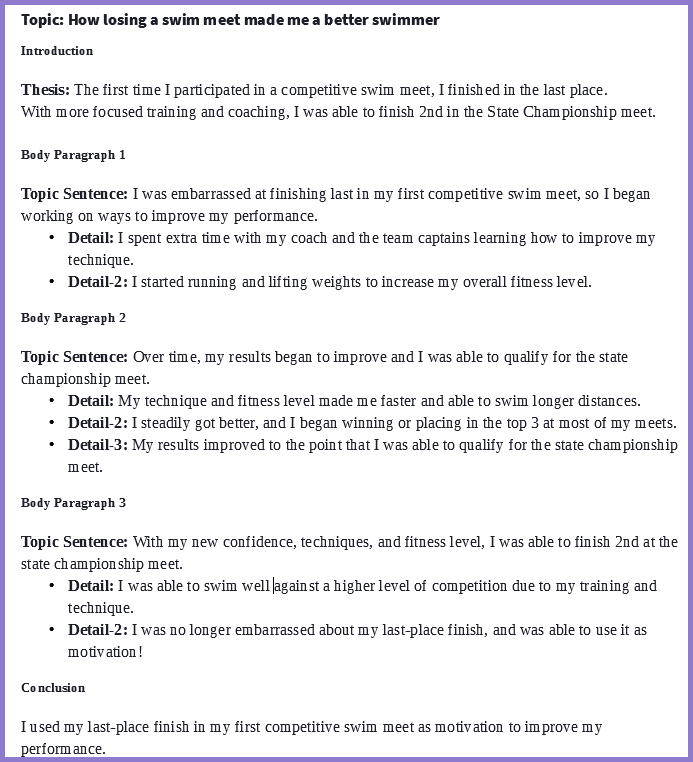
Expository Essay Outline Example
What about this example for your essay outline?

Research Essay Outline Example

Taken from: Austincc.edu
How to Make an Outline: the Process
As a rule, the only detail bothering those asking how to make an outline for an essay is the process itself. Students understand that an essay outline needs to specify all the main points and arguments of their future paper, but they still find it challenging to create.
More than that, professors may ask you to submit an essay outline for their review. That’s why the skills of planning your papers will come in handy anyway. To learn the secrets of effective outline writing, you’ll need to know what to do before outlining, what essay outline structure to choose for your work, and how to organize your outline so it would be as informative as possible.
Here’s how to outline an essay:
What to Do Before Outlining
First and foremost, read your writing assignment carefully. Make sure you understand what essay type you need to write, how many arguments to use (except as noted), and how long your essay needs to be.
Answer the question , “What’s the purpose of your essay?” Do you want to inform readers, persuade, or just entertain them? Depending on the goal, you’ll know what thesis to consider, what writing techniques to use, and how to visualize research in your paper.
Identify the audience. Yes, it’s a teacher who reads and evaluates your work; but whom do you want to read your essay ? Do you write for classmates? Strangers? What do they know about your topic? Would they agree with your thesis? How might they react to your information?
Depending on that, you’ll understand what arguments might work for your essay. It will also help you decide on resources to use for research and evidence to choose for your arguments. Consider credible sources such as Google Scholar or Oxford Academic to find references for your essay; take notes of them to use in your outline.
State your thesis so you could see what topic sentences to outline for your essay. A thesis needs to be arguable and provide enough details to hook readers so they would get them emotionally involved in your writing.
Once a thesis is ready, start structuring your essay outline.
Choose an Essay Outline Structure
From the above templates and examples, you’ve got a general idea of the basic structure for your essay outline. We used a standard alphanumeric structure there, but you can also use a decimal one for your outline to show how your ideas are related. Just compare:
Alphanumeric format:

Decimal format:
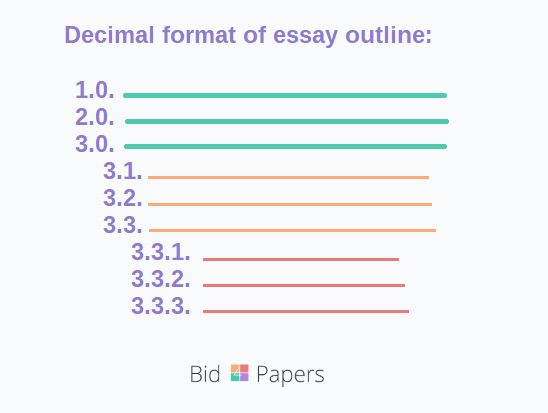
An alphanumeric outline is the most common one, but you are welcome to use a decimal outline structure if it seems clearer and more comfortable for you. Also, feel free to use complete sentences or just brief phrases for each section of your essay outline.
However, if you need to submit it to a professor for a review, use sentences. It will help him understand the arguments and evidence you are going to use in your essay.
Organize Your Outline
Now it’s time to fill in each section of your essay outline. For those lazy to read, here goes a short video:
For all others, start with outlining your introduction . Write a sentence about your topic and introduce your thesis. You can also mention an essay hook here – a sentence you’ll use to make the audience interested in reading your work.
Outline your essay body : write down a topic sentence for each paragraph, provide supporting evidence you’ll use when writing, and mention how they’ll relate to the topic and your thesis. The more details you outline, the easier it will be to organize all the thoughts while writing.
Also, you can write a transition sentence for each paragraph so it would be faster to structure and band all arguments.
Finally, outline your essay conclusion . Restate your thesis and write a concluding statement, aka a sentence addressing the importance of your thesis and proposing solutions to the problem you addressed in the essay.
It’s a Wrap!
Essays are many, and you need to write all of them in school and college. Persuasive, expository, narrative – their basic structure is the same but with tiny differences identifying their specifications and your knowledge of academic writing. Understanding those differences and outlining your writings accordingly is your chance to craft perfect works that get high grades.
An essay outline is what you need to organize the information and not miss anything while writing. When you know how to write an essay outline, you create papers better and faster. You keep in mind all essay components. You develop critical thinking. And you become a better writer.
Related posts
- What Is the Difference between Primary and Secondary Sources
- Common Types of Plagiarism with Examples
- Exemplification Essay – Ideas and Tips
Our Writing Guides
Purdue Online Writing Lab Purdue OWL® College of Liberal Arts
Types of Outlines and Samples


Welcome to the Purdue OWL
This page is brought to you by the OWL at Purdue University. When printing this page, you must include the entire legal notice.
Copyright ©1995-2018 by The Writing Lab & The OWL at Purdue and Purdue University. All rights reserved. This material may not be published, reproduced, broadcast, rewritten, or redistributed without permission. Use of this site constitutes acceptance of our terms and conditions of fair use.
Alphanumeric Outlines
This is the most common type of outline and usually instantly recognizable to most people. The formatting follows these characters, in this order:
- Roman Numerals
- Capitalized Letters
- Arabic Numerals
- Lowercase Letters
If the outline needs to subdivide beyond these divisions, use Arabic numerals inside parentheses and then lowercase letters inside parentheses. Select the "Sample Outlines" PDF in the Media Box above to download the sample of this outline.
The sample PDF in the Media Box above is an example of an outline that a student might create before writing an essay. In order to organize her thoughts and make sure that she has not forgotten any key points that she wants to address, she creates the outline as a framework for her essay.
What is the assignment?
Your instructor asks the class to write an expository (explanatory) essay on the typical steps a high school student would follow in order to apply to college.
What is the purpose of this essay?
To explain the process for applying to college
Who is the intended audience for this essay?
High school students intending to apply to college and their parents
What is the essay's thesis statement?
When applying to college, a student follows a certain process which includes choosing the right schools and preparing the application materials.
Full Sentence Outlines
The full sentence outline format is essentially the same as the Alphanumeric outline. The main difference (as the title suggests) is that full sentences are required at each level of the outline. This outline is most often used when preparing a traditional essay. Select the "Sample Outlines" PDF in the Media Box above to download the sample of this outline.
Decimal Outlines
The decimal outline is similar in format to the alphanumeric outline. The added benefit is a system of decimal notation that clearly shows how every level of the outline relates to the larger whole. Select the "Sample Outlines" PDF in the Media Box above to download the sample of this outline.
- Essay Topics
- Homework Help
- Essay Types
- Essay Examples
- Become a Tutor
How to Deal with College Essay Outline? 5 Templates for Better Writing

Practice shows that outlining an essay often seems difficult for students. Do you also have problems with the outline for an essay? Let’s figure it out together! From this article you will understand why you need to make a good outline, take a look at good and bad outline examples and find 5 prewritten college essay outline templates. Enjoy!
Why Do I Need to Create an Outline For My College Essay?
Many students don’t know how to produce a well-structured essay outline and, moreover, they often don’t understand why they should do it. We will try to explain it. To begin with, what is the definition of essay outline? It is a framework that presents main and minor ideas of your essay in a structured way. There are many benefits for those students, who want to learn how to produce a good essay outline:
- It adds value to your essay as your readers will be able to understand more quickly what your main ideas are, which arguments you will use and how they are connected in your essay.
- Outlining an essay will make a writing process much easier for you. You will always be able to remember which things you need to mention in your essay and how to make transitions between arguments.
How Essay Outline Should Look Like? Good Essay Outline Templates and Examples

Good outline should be complete and include all the main ideas of your essay, but at the same time you should keep it to the point. Long outlines will not bring value for you and for your readers. Outlines presented below can give you an idea of how good and bad outlines should look like. As you see, the outline on the left is well-planned and it is clear which arguments the author will use to support the position and how he will terminate the essay. The outline on the right is general and does not give an idea of what will be covered in the paper.
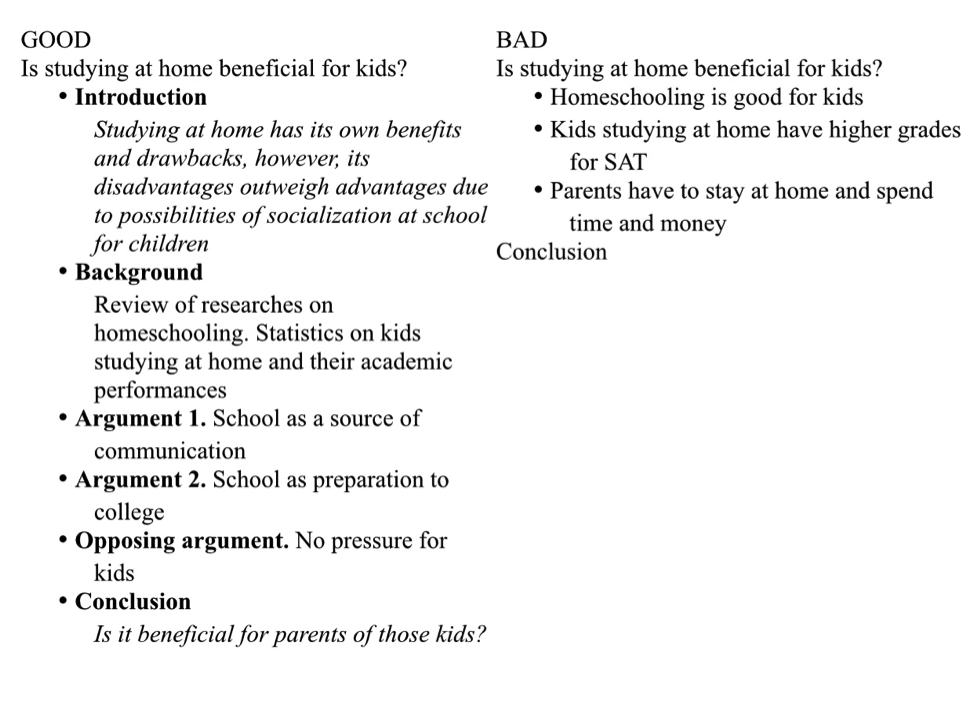
Argumentative Essay Outline Template
Introduction
- Attract attention to your topic (make sure that the topic is relevant, doubt a well-known fact, provide quotation relevant to the theme)
- State different points of view
- Explain why you are interested in the topic (optional)
- State your position clearly
- Provide general information on your topic (optional)
- State figures, facts, trustworthy opinion, personal experience that could justify your point
- Elaborate it, explain how fact/figure/opinion you provided help to prove your position stated in introduction
- Elaborate it, explain how facts/figures/opinions you provided help to prove your position stated in introduction
- Restate your position in other words
- Summarize arguments
- Final statement – quotation, show which particular aspect of essay topic should be analyzed

5 Paragraph Essay Template Printable
First Paragraph (Introduction)
- Overview of the topic
- Explain which opinions exist
- Express your position clearly
Second Paragraph (Background)
- Review existing articles and reading materials on the question,
Third Paragraph (Support)
- Provide a claim in favor of your position
- Explain how it supports your position
- Summarize it briefly
Fourth Paragraph (Opponents arguments)
Opposing Argument 1
- Provide a claim that contradicts your position
- Explain why it is a weak statement
- Make a conclusion in favor of your position
Opposing Argument 2
- Explain why it is a weak argument
Fifth Paragraph (Conclusion)
- Briefly summarize all the arguments in third paragraph
- Explain why the issue covered is important
College essay outline template
Introductory Paragraph
- Make a statement that reflect the topic main idea
- State subtopic 1 (one sentence)
- State subtopic 2 (one sentence)
- State subtopic 3 (one sentence)
Supporting fact, opinion or detail
- Synthesis of all mentioned facts
- Underline the progression of evidences on the topic
- Explain how topic could be elaborated
Research paper outline template
- Way of attracting readers’ attention
- Thesis statement
- Main aspect of your theme
- Restate main statement
- Summarize main aspects of the topic
- Underline relevance of a research
- State how topic could be researched further
Methods used (optional)

Template for an informative essay
- General facts about the topic/Relevant definition/Relevance of the issue
- State the position on the question you will cover
Paragraph 1
- Explain how the paragraph will help to elaborate the main idea
- Provide the complete analysis
- Connection to the next paragraph
Paragraph 2
Paragraph 3
- Connection to the conclusion
- Review main ideas
- Call to further develop the question
Good luck with your studies and never ignore the importance of the outline!
Related articles

Popular articles


Academic Essay
Essay generator.
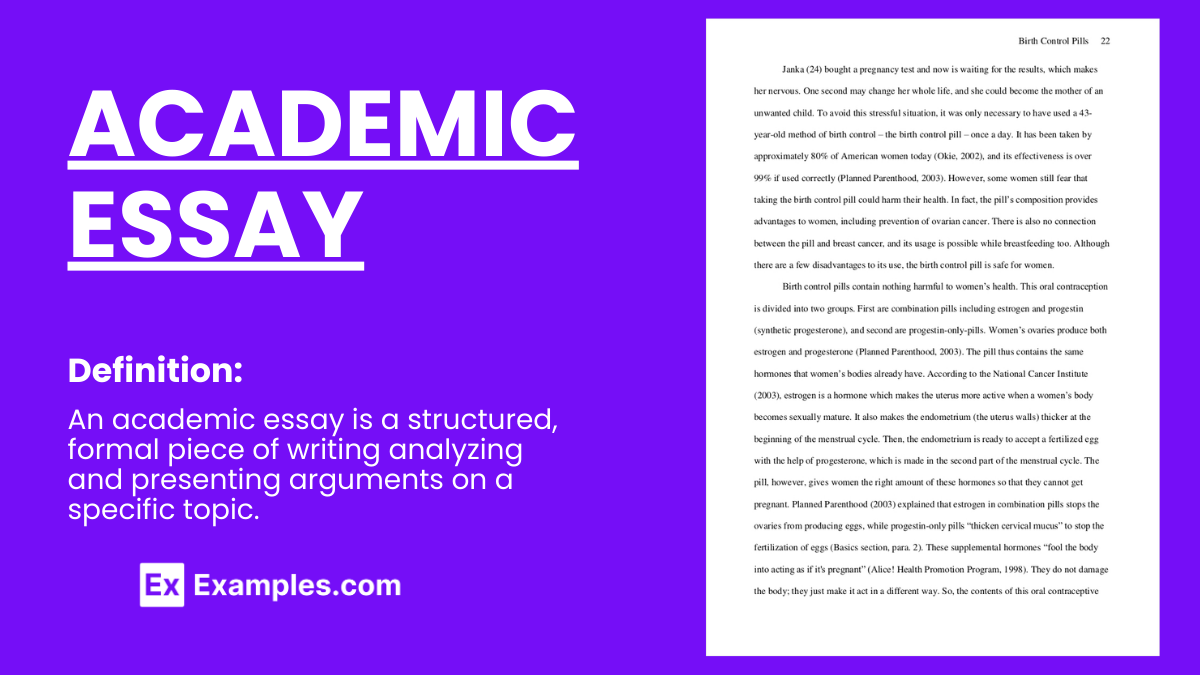
When creating an academic essay , it is very important for you to relay a sensible and clear argument to your target readers. Since academic essays are widely used in the field of education and research, you need to ensure that you do both logical, interesting and informative writing . The items that are commonly seen in an academic essay contain insights, actual occurrences, ideas, and facts.
What is Academic Essay?
An academic essay is a structured form of writing that serves the purpose of presenting and supporting a thesis or argument on a specific topic. It is commonly used in educational settings to assess students’ understanding, analytical skills, and ability to research and convey their findings. An academic essay typically follows a clear format, including an introduction with a thesis statement, body paragraphs that provide evidence and analysis to support the thesis, and a conclusion that summarizes the main points and reinforces the essay’s central argument. This type of essay requires critical thinking and a formal tone, with evidence cited from reputable sources to back up claims made within the text.
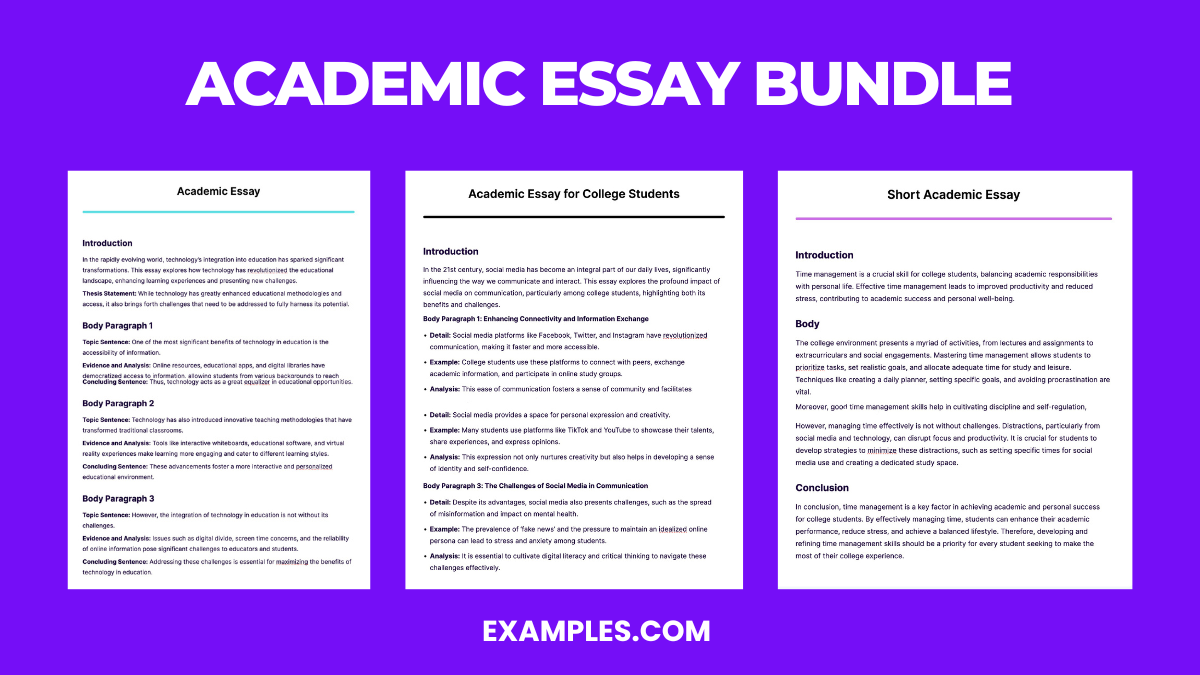
Download Academic Essay Bundle
A lot of students tend to think that an academic essay, just like any other college essay , is something that is too technical or defined. However, you can always write one depending on how you perceive a specific topic of discussion or how you interpret an instance or any other subjects. The samples that we have for you can be a great help if you would like to start writing your academic essay already.
Academic Essay Writing Format/ Outline
1. title page (if required).
Includes the essay’s title, the author’s name, and institutional affiliation.
2. Introduction
Hook : Opens with a statement to grab the reader’s interest. Background Information : Provides context for the topic being discussed. Thesis Statement : Presents the main argument or claim of the essay.
3. Body Paragraphs
Each paragraph should focus on a single idea that supports the thesis, structured as follows:
Topic Sentence : Introduces the main idea of the paragraph. Evidence and Analysis : Includes data, quotes, or examples to support the topic sentence, followed by an explanation of how this evidence supports the thesis. Transition : Connects to the next paragraph or idea.
4. Conclusion
Summary of Main Points : Restates the key arguments or findings presented in the body paragraphs. Restatement of Thesis : Reinforces the essay’s main argument in light of the evidence presented. Closing Thought : Offers a final insight, a call to action, or a suggestion for further research.
Example of Academic Essay Writing
The Impact of Social Media on Communication In the digital age, social media has revolutionized the way we communicate, transcending physical boundaries and transforming social interactions. This essay explores the profound impact of social media on communication, examining both its positive advancements and negative implications. While social media platforms like Facebook, Twitter, and Instagram have enhanced our ability to connect with others, they have also led to a decline in face-to-face interactions and a dilution of personal communication skills. Social media has made it easier than ever to stay connected with friends and family, regardless of geographical distance. A study by Smith and Duggan (2016) found that 75% of internet users utilize social media to maintain relationships with distant family and friends. This widespread use of social media for keeping in touch demonstrates its role as a vital communication tool, bridging the gap between people worldwide. However, the reliance on social media for communication has led to a decrease in the quality of interpersonal interactions. Research by Johnson (2018) indicates a 40% decline in face-to-face conversations among young adults, correlating with increased social media usage. The preference for digital communication over personal interaction suggests a shift in social dynamics, potentially harming relational depth and emotional connections. Moreover, social media has affected our communication skills, particularly among younger generations. A survey by Lee (2019) revealed that 60% of teachers believe social media use has adversely affected students’ writing and verbal communication skills. The informal language and abbreviations common in social media posts and messages are infiltrating academic and professional communications, underscoring the need for a balanced approach to digital interactions. Social media has undeniably transformed communication, offering unparalleled connectivity but also presenting significant challenges. While it fosters global connections, its overuse can undermine personal interactions and communication skills. Balancing social media use with face-to-face communication is crucial for maintaining meaningful relationships and effective communication in the 21st century.
What is an example of academic writing?
Title: The Impact of Climate Change on Biodiversity
Introduction: Climate change, driven primarily by human activities such as the burning of fossil fuels and deforestation, has emerged as a critical global concern. This essay aims to explore the multifaceted impacts of climate change on biodiversity. The effects of rising temperatures, altered weather patterns, and habitat destruction are increasingly evident, with far-reaching consequences for ecosystems and species worldwide.
Body Paragraph: One of the most noticeable consequences of climate change is the shifting geographical ranges of numerous species. Warmer temperatures prompt species to migrate to higher altitudes or latitudes, as they seek habitats that align with their thermal preferences. This phenomenon is evident in various ecosystems, including mountain regions, where alpine plants and animals have progressively moved uphill. These migrations, while adaptive, can disrupt established predator-prey relationships and competition for resources. Such shifts can also lead to reduced biodiversity in lower-altitude regions as some species fail to adapt or relocate successfully.
- Smith, J., & Johnson, A. (2019). Impacts of Climate Change on Alpine Plant Communities. Environmental Studies Journal , 42(3), 256-270.
- Wilson, P., & Davis, R. (2020). Climate-Induced Shifts in Animal Distributions: Evidence from a Decadal Study. Ecology and Evolution , 10(12), 5963-5972.
Conclusion:
In conclusion, climate change exerts profound effects on biodiversity, manifesting through shifts in species distributions, altered ecological relationships, and habitat loss. As global temperatures continue to rise, addressing these impacts becomes increasingly urgent. Conservation efforts, sustainable practices, and international cooperation are essential in mitigating the repercussions of climate change on the world’s diverse ecosystems and species.
Academic Essay Topics with Samples to Edit & Download
- Pollution due to urbanization
- The environmental causes of smoking
- The outcomes of global warming
- Abortion as a controversy
- Causes of obesity in teenagers
- Childhood memories
- Fathers should get equal paternity leave
- Harmful dogs should be euthanized
- How does divorce affects children?
- How does technology affect productivity?
- Importance of preserving threatened species
- Parenting styles and motives
- Political issues in the U.S.
- Romantic relationships
- Should schools abolish homework?
- Violent video games should be banned
- Ways of protecting the environment
Academic Essay Writing Examples & Templates
1. academic essay example.
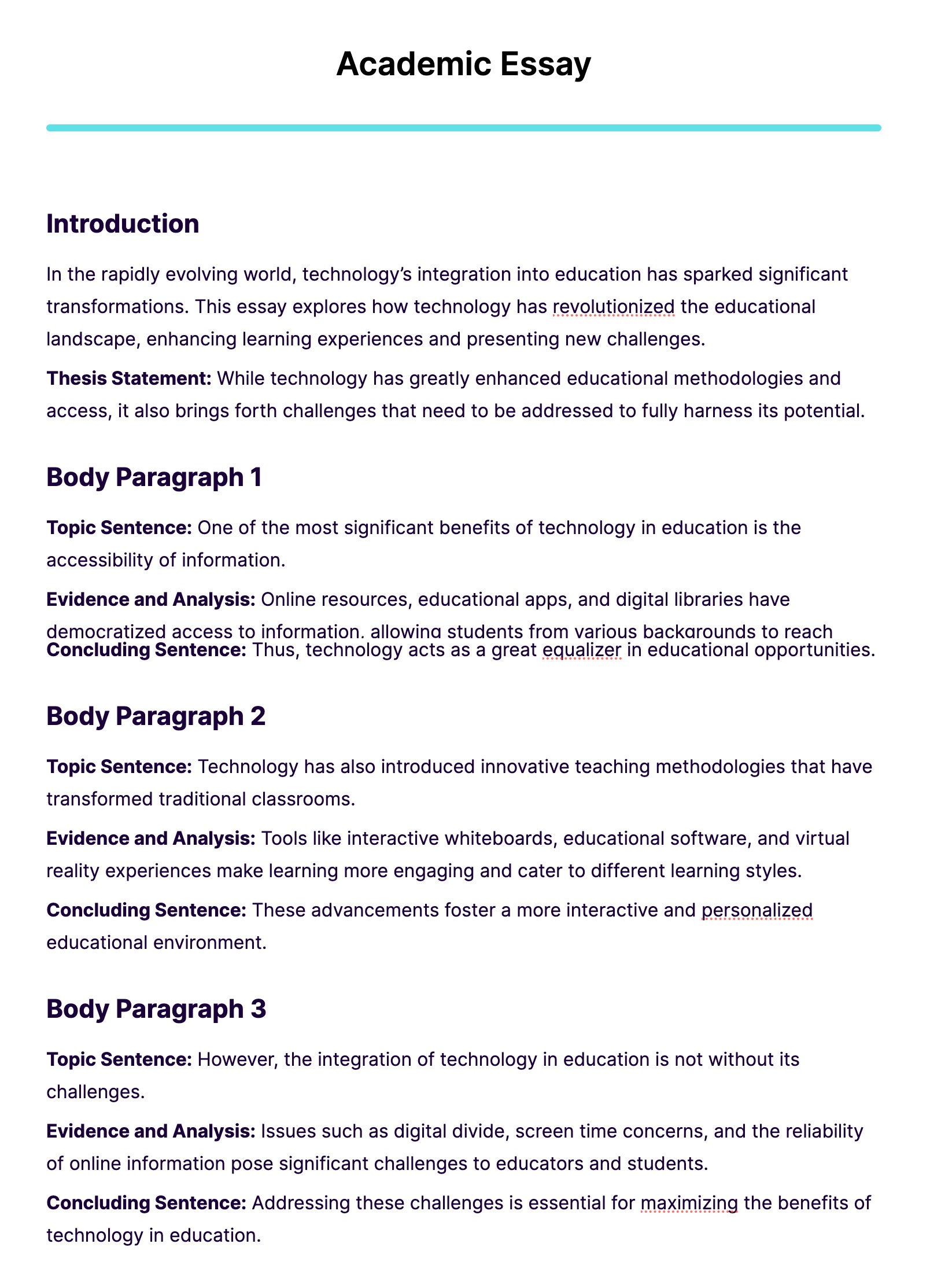
Free Download in PDF
2. Academic Essay for College Students
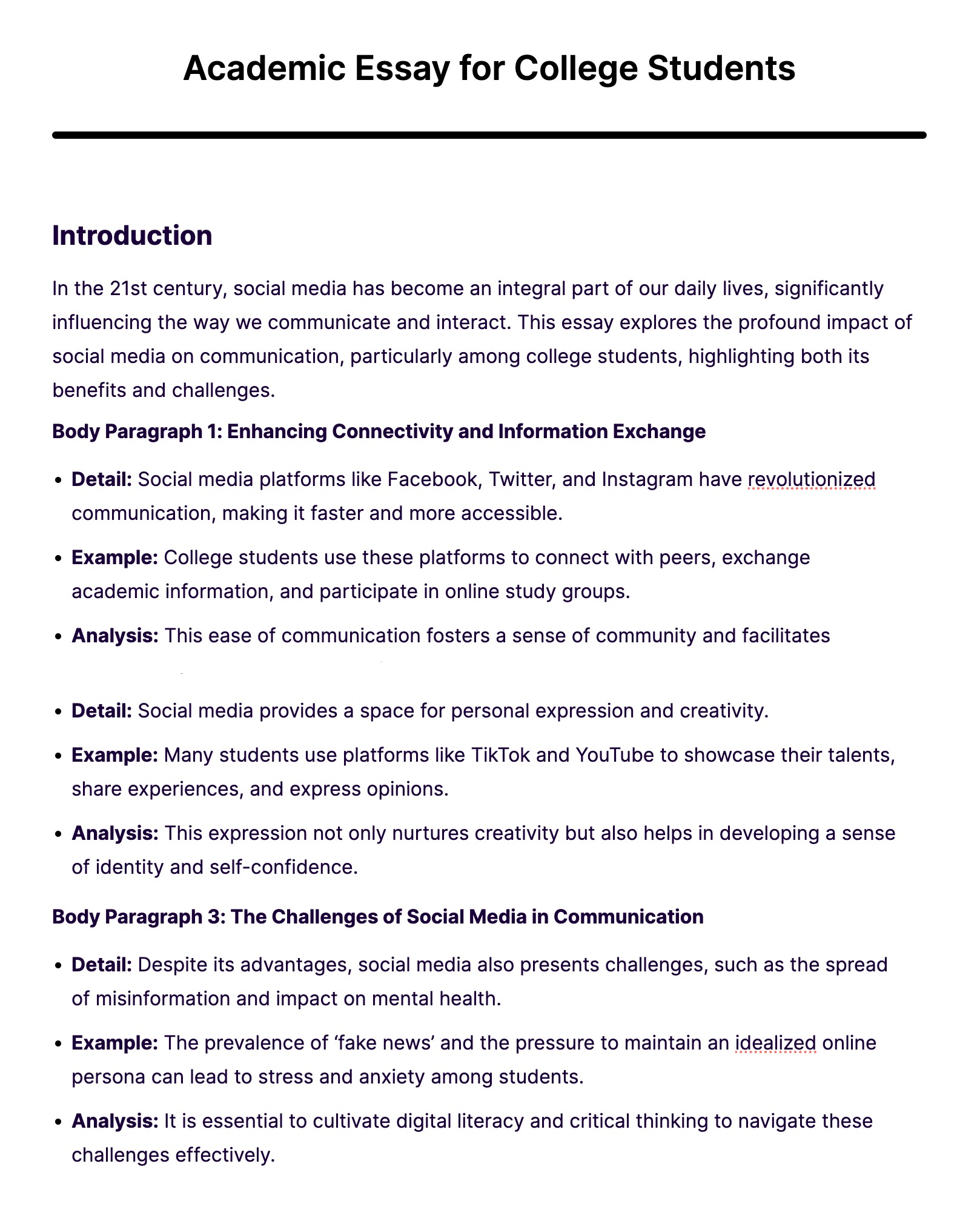
Edit & Download
3. Short Academic Essay
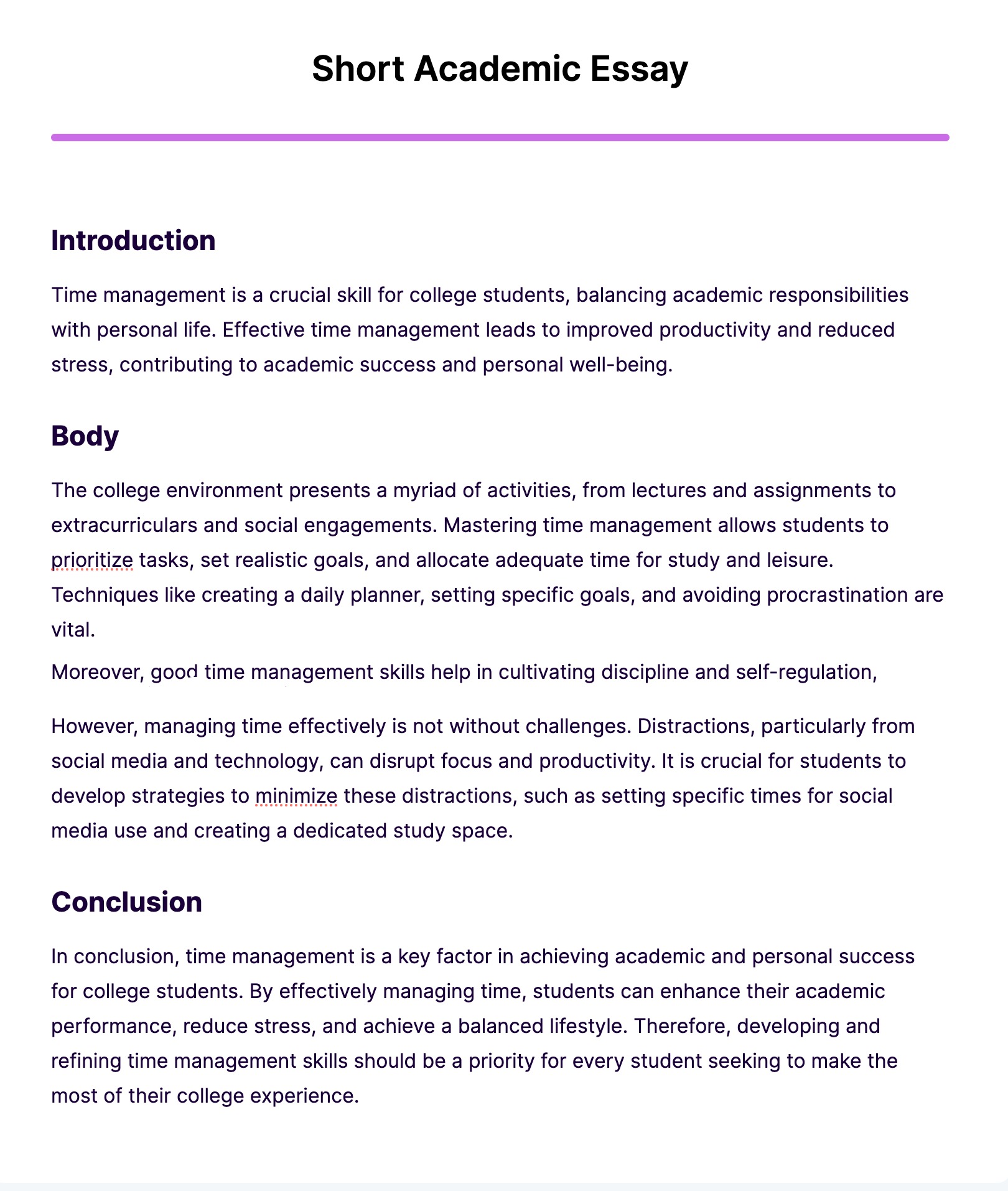
4. Academic Essay Template
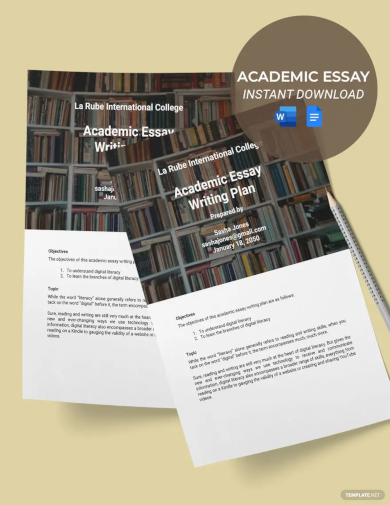
5. Academic Writing Essay Template
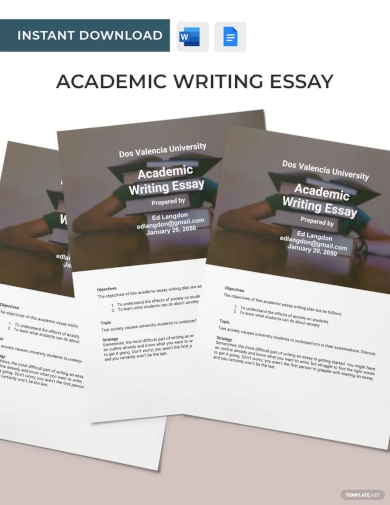
6. Academic Text Example Essay Template
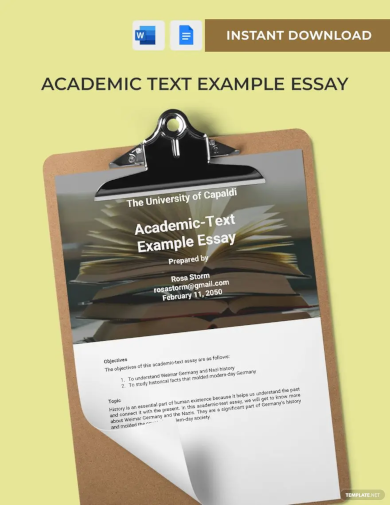
7. Academic Essay Writing Examples
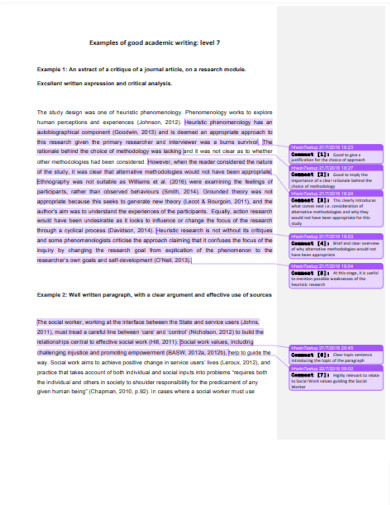
academic-skills.health.herts.ac.uk
8. Academic Essay for College Students Examples

9. Narrative Academic Essay Examples
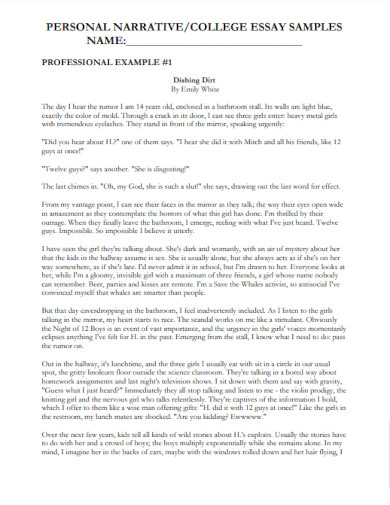
learning.hccs.edu
10. Sample Academic Essay Format Example

owll.massey.ac.nz
11. Academic Paper Essay Example
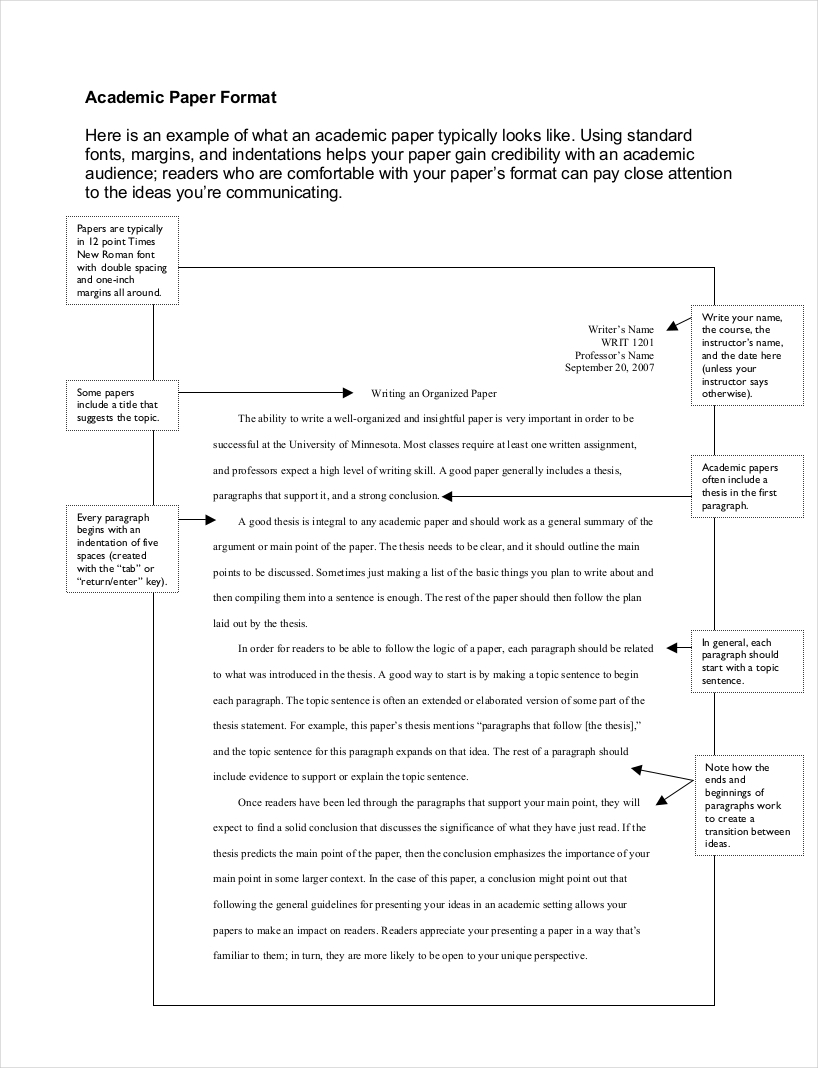
writing.umn.edu
12. Simple Academic Essay Example
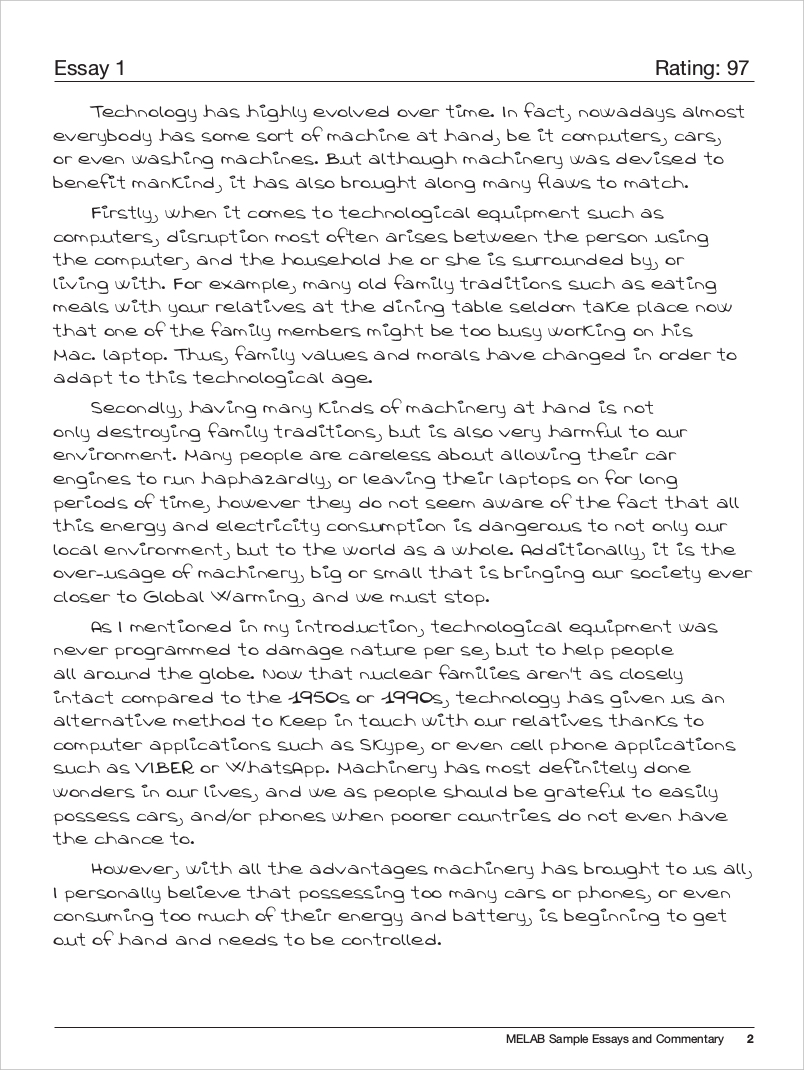
cambridgemichigan.org
13. Academic Essay Sample Structure Example
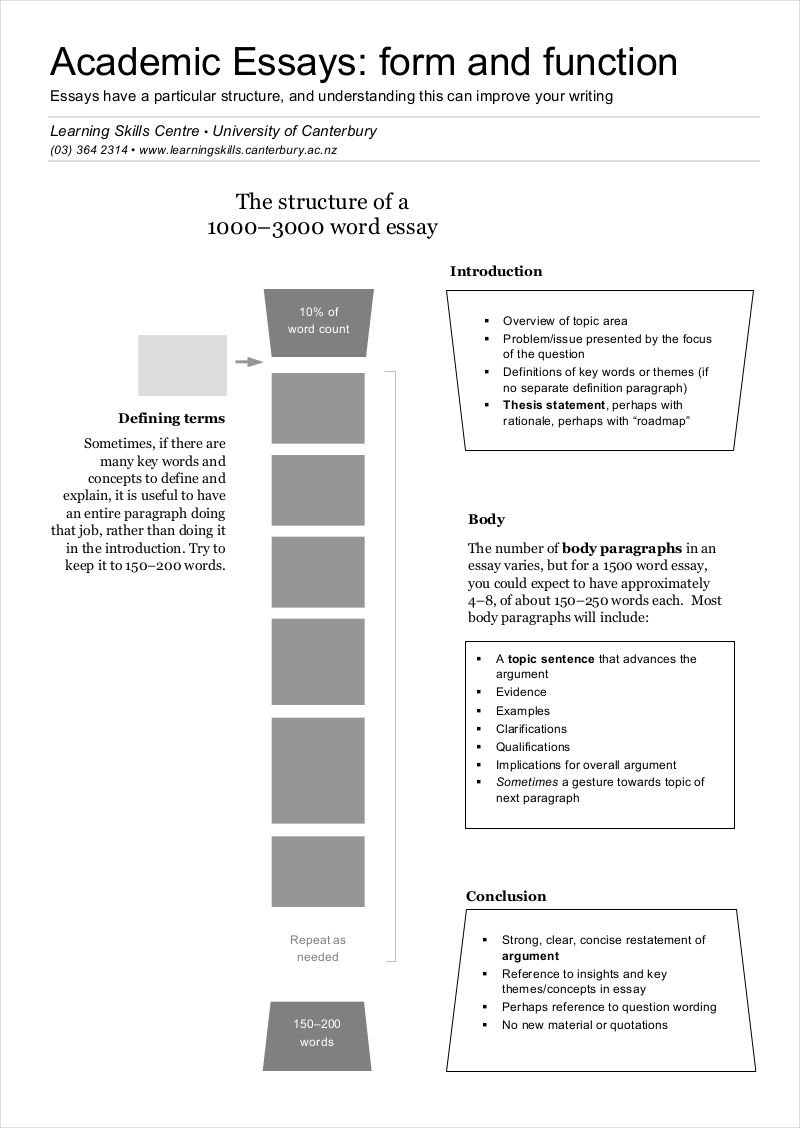
lps.canterbury.ac.nz
14. Short Academic Essay Example in PDF
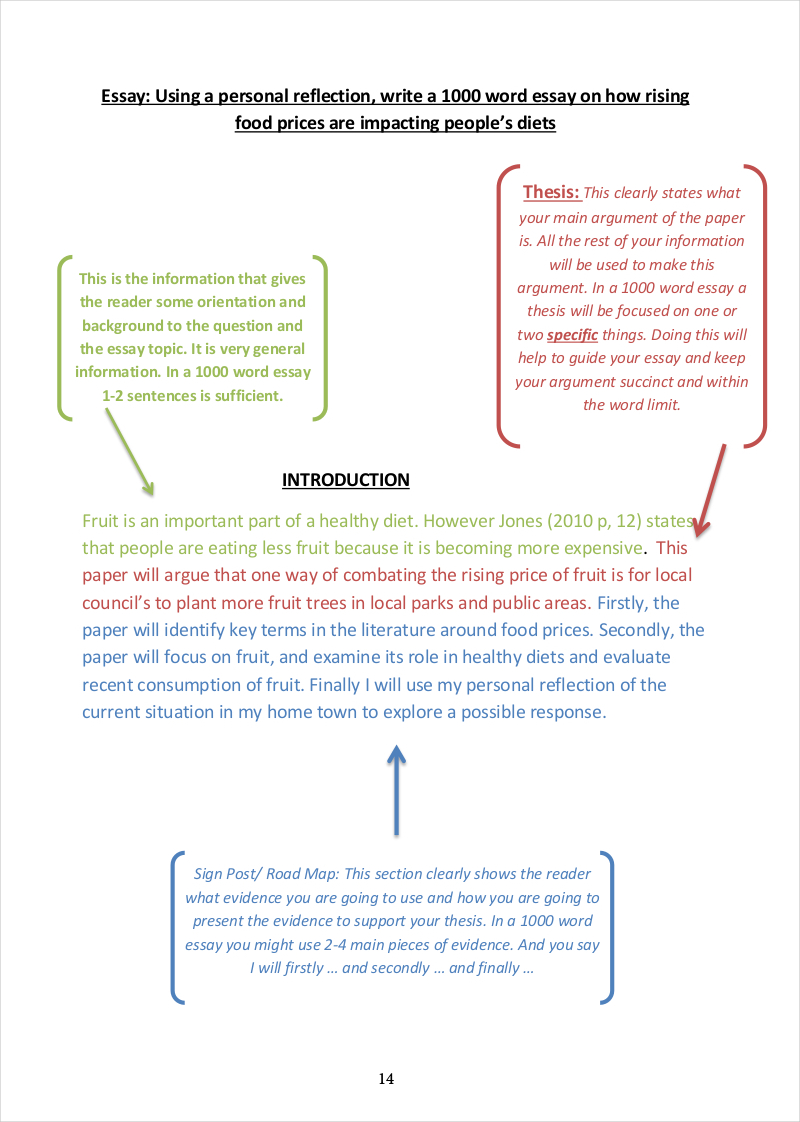
15. Free Printable Academic Essay Sample
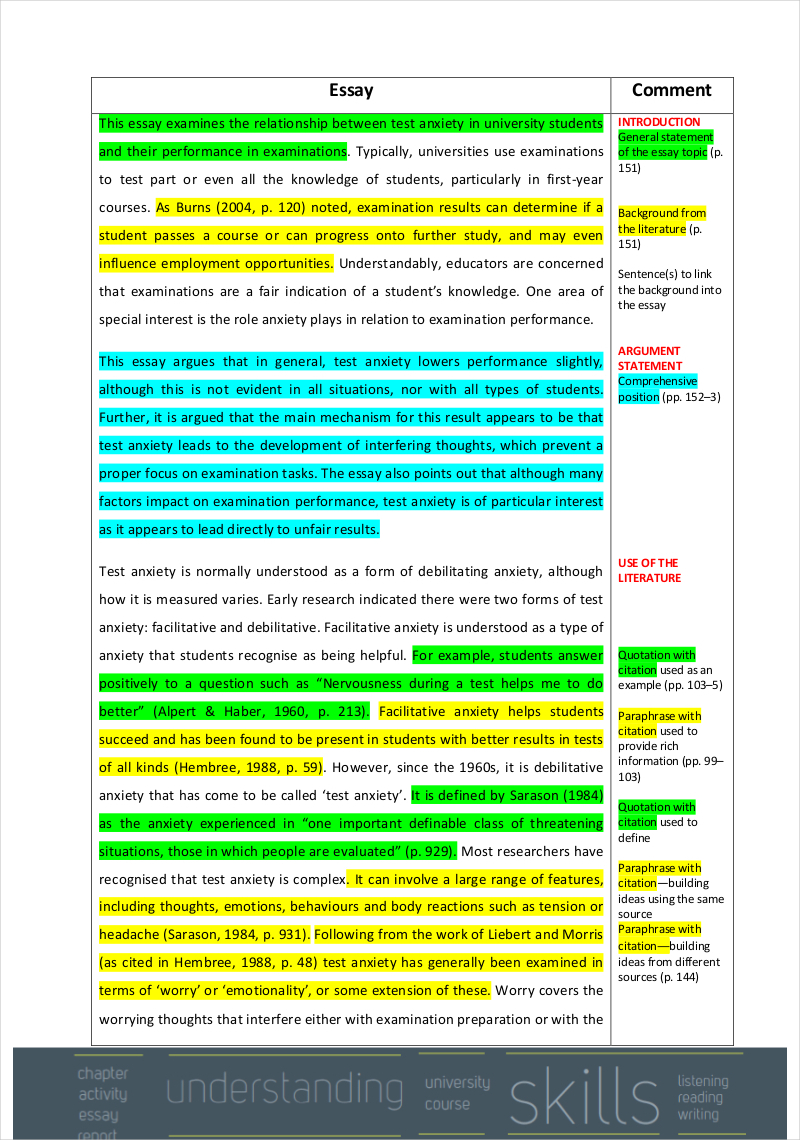
lib.oup.com.au
16. Sample Academic Essay Example
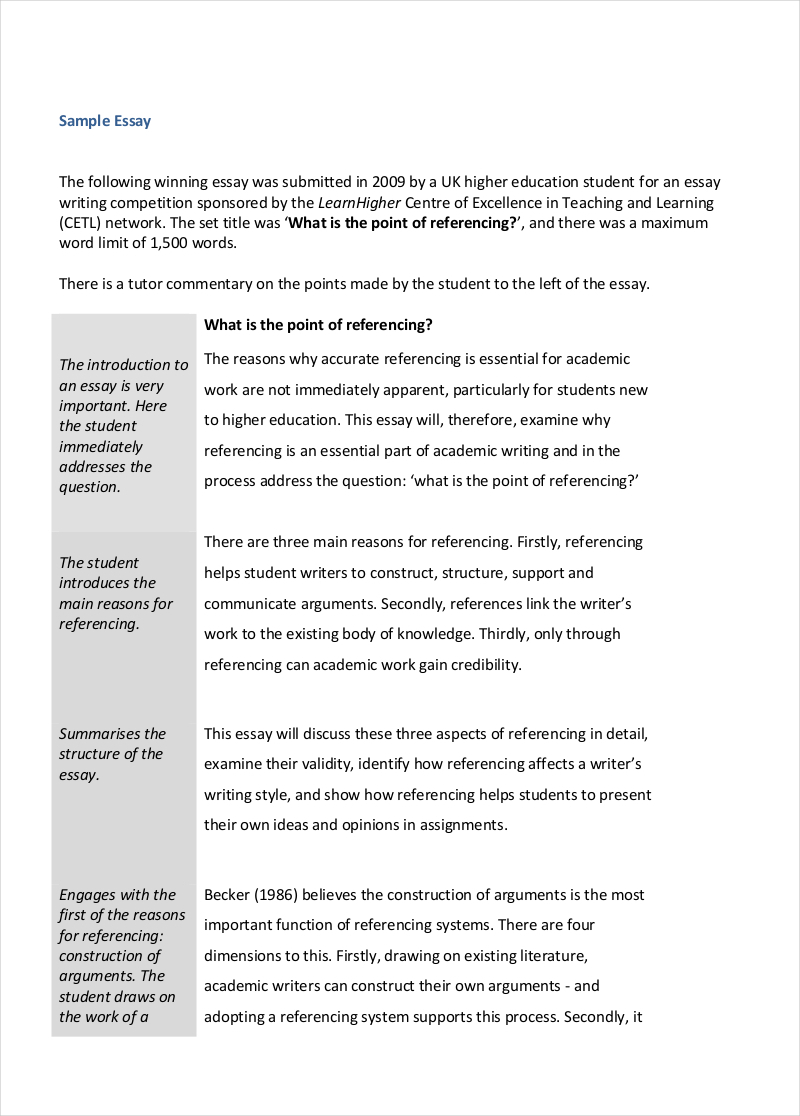
17. Academic Essay Writing Sample Example
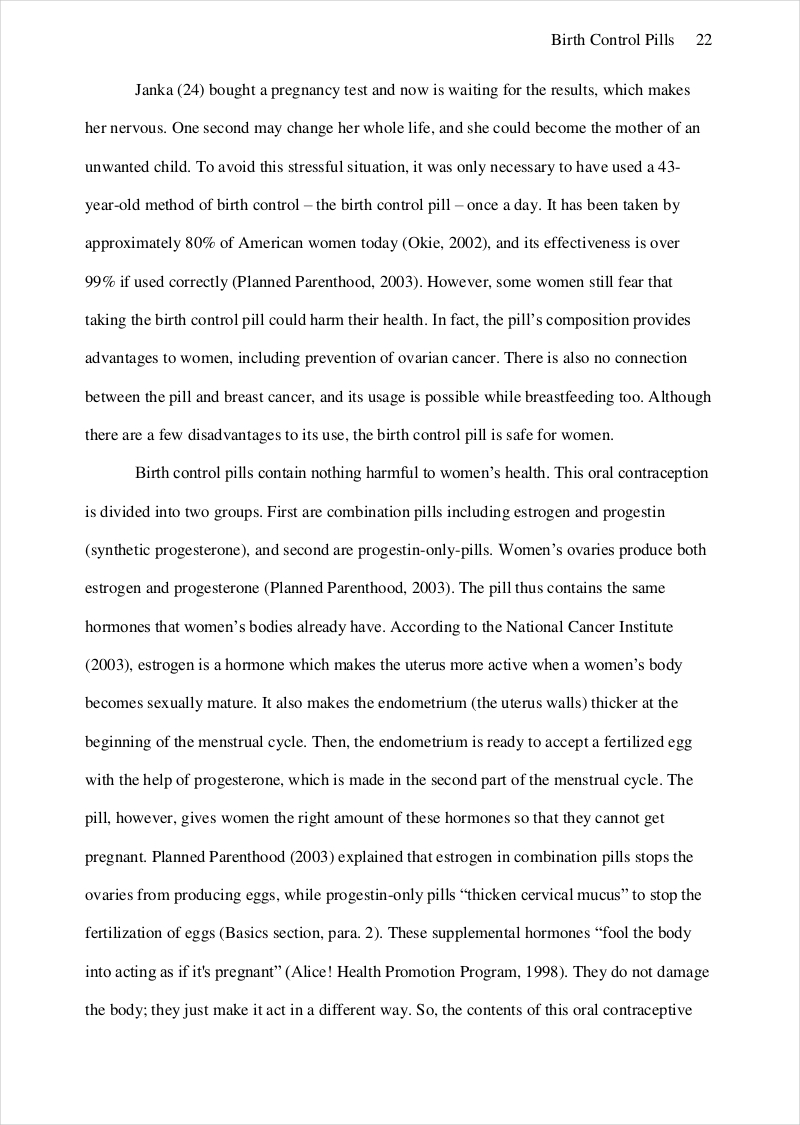
18. Free Academic Essay Sample Guide

intranet.ecu.edu.au
19. Sample Academic Essay Outline
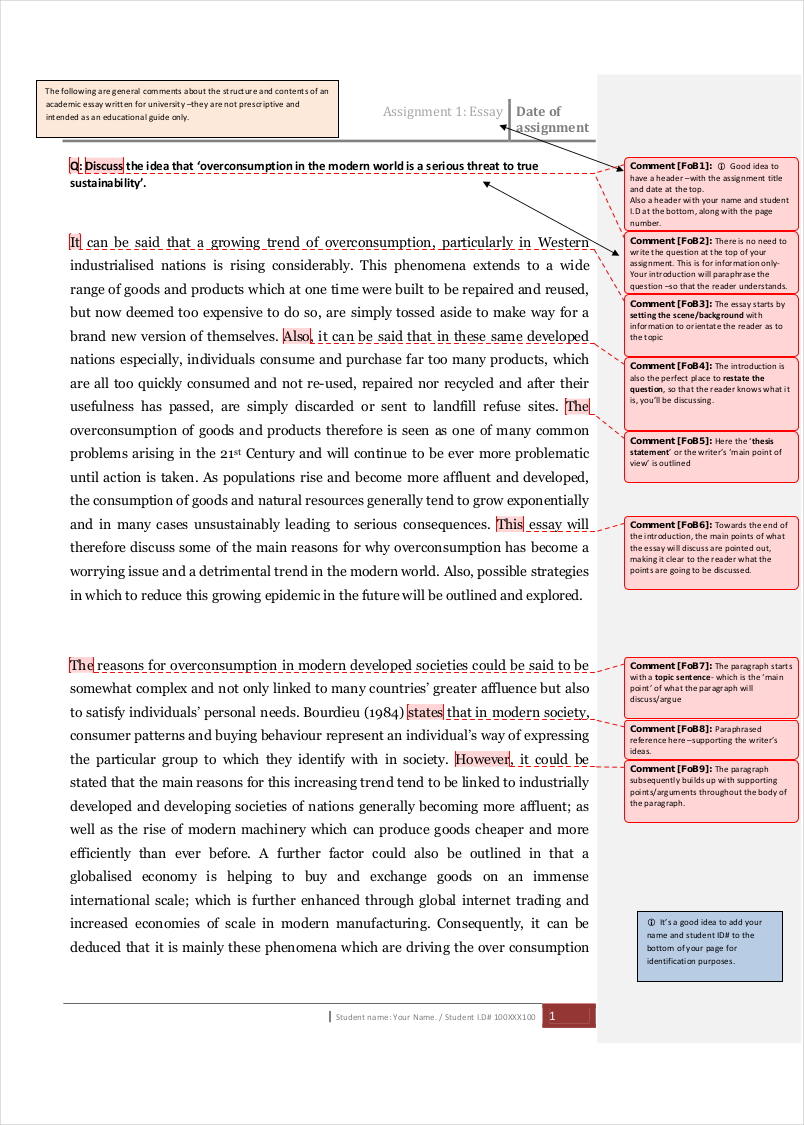
lib.uts.edu.au
Are You Ready and Prepared to Create an Academic Essay?
Different types of academic writing require an individual to have a clear thought process within the entirety of idea development. You have to be focused on what you would like to achieve your final written output so you can incorporate successful guides and processes within the activity. Some of the things that you can talk about in an academic essay include the following:
- Human behavior, characteristics, and emotions
- Community relations
- Natural occurrences
- Language and its effective usages
- Culture and the arts
- Academic researchers
- Relevant cultural phenomenon
- Photography and other artistic undertakings
- Human interactions
- Other subjects that are related to education and academics
Knowing the subject of your article is only one of the initial things that can help you prepare during the writing process. Here are some ways on how you can be ready to write your academic essay:
- You need to have an order of writing that can easily showcase the flow of your thoughts. You must ensure that you can easily connect with your readers or audience so they can respond to the content of your article. Your academic essay should evoke an emotion that is necessary to spark other ideas, opinions and other kinds of responses.
- You need to be aware that academic essays differ depending on the educational or academic discipline where they will be used. There are certain ways that are necessary to be followed in various fields for an academic essay to be deemed effective. With this, always be mindful of the directions or instructions were given to you by the entity who requires you to write an academic essay.
- You do not need to pattern your writing to the works of others. You can be ready even by just knowing your subject and researching about it. The style of writing that you have can give the most difference to how you write and how you present your work. Always keep in mind that your academic essay should be playful – it must not bore your audience.
- You must think of your academic essay as an enterprise by using scholastic writing approaches. The conversation that you can create with your readers must be relevant to what is happening nowadays or for the study that specific student groups need. Being able to give focus on the relativity of your written work can make it easier for readers to understand why your academic essay is important within the academic field.
- You should ensure that your thesis statement is precise, concise, and strong. When you are in the process of developing your academic essay’s thesis, you need to make sure that you are not just basing your write-up on unreliable information. Always refer to evidence, facts, and real data as it can help you strengthen your claims. More so, do not forget to reference your essays when necessary.
Things to Remember When Identifying the Purpose of Your Academic Essay
An academic essay always has to be relevant. It needs to be beneficial to a specific group or to the majority of the academic community. The motive of your essay is very important to be considered as it can identify whether you can be of help to the people who need a particular educational reference. Here are a few things that you need to remember when identifying the purpose of your own academic essay:
- Do not create an academic essay just for the sake of passing it. Your academic essay is more than an assignment or a project. There are some last minute essay writing activities that are done in various fields especially if students think that an academic essay is just a part of their requirements. However, what these students do not know is that an academic essay is a representation of themselves. It showcases the thoughts of the students, what they have learned may it be in class or through self-discovery, and how they are impacted by certain issues and subjects of discussion. This is where the value of a Free Essay and an Informative Essay becomes evident, as both types of essays encourage students to express their understanding and insights on a given topic freely and informatively.
- Be precise with the purpose of your writing. An academic letter is not just a document that can showcase your mastery when it comes to a particular academic subject. It can talk about a specific subject or it can also be a general paper that can provide a lot of information about your experiences and/or insights. This is where the importance of a Self-Introduction Essay comes into play, allowing you to present a personal narrative that reflects your academic journey and achievements. Similarly, an Expository Essay helps in laying out facts and an unbiased analysis of a topic, further enriching the academic discourse. If you will have a precise purpose when writing an academic essay, there is no doubt that your essay will not be pointless.
- Always think of the best case that can help you represent your thoughts. Your style of writing, as well as the entire document’s format and content, can help you realize your ideas. This includes the succinctness and clarity often found in a Short Essay , where the challenge is to convey your thoughts within a limited word count effectively. Similarly, a Scholarship Essay requires you to articulate your achievements and aspirations in a way that resonates with scholarship committees, demonstrating your potential and need for financial support. With this, your point of writing can easily be identified by readers. Being able to present your purpose the best way possible can add up to the success of your academic paper.
Developing an Academic Essay
For you to be able to persuade your readers with the content of your academic essay, there is a need for you to present a structure that can easily identify your claims, arguments, observations, and/or factual presentations. Integrating a Student Essay can demonstrate the personal perspective or learning journey of an individual, making your arguments more relatable. Similarly, incorporating a Travel Essay could enrich your essay by providing unique insights and observations from different cultures or environments. Being clear about how you present your idea is essential for people to see the context of your academic essay.
If you have an organized manner of putting together the concepts of your academic essay, then validating your thesis statement can be more evident. To avoid common essay mistakes and other negative factors that can affect your desired output, here is a basic guide on how you can develop your own academic essay:
- Start by creating a strong thesis statement. Identify your stand and make sure to strictly present evidence that can help you claim its authenticity and validity. Reveal evidence after your thesis statement presentation. Your thesis statement serves as your introduction speech . It lets your readers know the topic of your academic essay and what they can expect from the entire article.
- Establish the context of your essay after your thesis statement. The way that you approach your topic can let readers know whether it is the specific approach that they also need for their undertakings. There are different contexts that can be used within the same subject, so you have to make sure that you will be clear when it comes to identifying the part of the topic that you are going to talk about. This clarity can be achieved through a Descriptive Essay , where vivid descriptions and details about the topic can enlighten and engage the reader. Additionally, understanding the Parts of an Essay is crucial in structuring your thoughts and arguments effectively. Limiting your topic discussion can help you give more focus to what is important for your discussion, ensuring that each part contributes meaningfully to the whole.
- Create the next paragraphs based on the data that can support your thesis statement. The body of your academic essay can be based on your observations, reviews, statements and research outputs. You can present these items separately through the usage of various paragraphs. However, there are instances where it will be better if you can combine or compare to evidence to make your statements more effective.
- Conclude. Your conclusion is as important as your introduction. If you believe that you have created a strong introduction, you have to maintain that until the end of your academic essay. Sum up all the information that you have presented so that people can identify whether your conclusion has lived up to the content of what you have written. Your conclusion can also be used to assess whether your thesis statement has been carried within the entirety of your discussion.
Importance of a Well-Defined Thesis Statement in an Academic Essay
A thesis statement is a paragraph or a set of paragraphs that identifies your stand about your subject. There is a need for this statement to be created as it can affect the entirety of your academic paper. Here are some of the reasons why it is important to develop an effective thesis statement before and while writing your academic paper:
- Your thesis statement is a reflection of your actual idea. This helps you present the point that you would like to make and the message that you actually want to disseminate to your readers. Through a thesis statement, you can organize the evidence that are relevant to your claims based on their relevance to the topic and how you view it as a writer.
- Your thesis statement can guide you within the entirety of your writing processes. Just because you have already done an initial thesis statement does not mean that you are going to fully stick with it until the end of your writing. There are instances where thesis statements are developed or even changes during the creation of an academic essay depending on how the research about the topic has evolved.
- Your thesis statement can allow you to establish originality. Since your academic essay can be based on your research findings and observations, your thesis statement can be your platform to specify what you have come up with. Through a well-defined thesis statement, you can set your output apart from other essay examples that have been written by professionals and other entities in the field of academics.
- Your thesis statement is one of the items that the audience will look at when referencing for credibility and validity. Academic essays need to have a strong initial impact on readers. This statement can help them be focused on a particular standpoint which can enlighten them about your views and opinions, and how these are essential to be considered.
- Your thesis statement can help your readers immerse in your academic essay. The material that you will be coming up with can be reviewed by different people. Depending on the field of education where you are currently in, you need to make sure that your readers can see patterns of evidence presented so they can clearly see how you were able to generate and come up with insights. You have to ensure that the thesis statement that you have created contains the most promising thought so you can get the trust or even the acceptance of your readers about your academic essay’s subject.
Guidelines in Writing an Academic Essay
The course materials that you need to talk about within an academic essay can reflect your level of understanding about the subject. Simply put, an academic essay can be an evidence of the depth of your research procedures and all the other activities that you have executed so that you can support the content of your written output. Listed below are some of the guidelines that can be useful to your academic essay writing processes.
- Always analyze your essay prompt or the question that you need to answer or explain. You have to know whether you are tasked to argue, analyze, or discuss the topic. There will be times where you also need to compare the items present in your subject or explain the underlying factors that can affect your topic.
- Make sure that you will research about what you will write about . Your academic essay can only be fully-maximized if you can present facts. Primary research may be a helpful bit a more precise review of your research topic can help you gather more information that can be helpful in the development of your content. Always assess your sources of information so you can ensure that they are credible.
- Create a draft so that you will have a guide when writing your academic essay. If you will be organized when writing your academic essay, you can create an output that is well-curated and comprehensive. With this, your academic essay can provide more impact to your readers. This can also help you gather your thoughts first and identify how you can put them all together in the most cohesive and efficient way possible.
If you still do not feel confident in writing your own academic essay from scratch, then you can refer to templates and samples which you can download online. Doing this will allow you to be more familiar with the common content and basic formats that are usually seen in an academic essay. When using a template as a guide, always make sure that it is applicable to the study that you are practicing or the academic field or discipline where you will use your academic essay.
As a student, there will always be an instance where we will be required to write an academic essay. If you want to create an academic essay that is both outstanding and relevant, always put the items that we have discussed above in mind.
Setting the Stage for Essay Writing Success
- Understand the Assignment: Carefully read and comprehend the essay prompt or assignment to grasp its requirements and objectives.
- Topic Selection: Choose a relevant and interesting topic that aligns with the assignment.
- Research: Gather credible sources and information related to your topic. Take thorough notes and document your sources.
- Thesis Statement: Develop a strong, clear, and concise thesis statement that presents the main argument of your essay.
- Outline: Create an outline that organizes your essay into sections, including the introduction, body paragraphs, and conclusion. Each section should have a clear purpose.
- Writing Draft: Begin writing your essay, keeping the introduction engaging, and ensuring each body paragraph addresses a single point or idea supported by evidence.
- Citations: Properly cite sources as you write, following a recognized citation style (e.g., APA, MLA).
- Edit and Revise: Review and revise your draft, focusing on grammar, clarity, coherence, and organization.
- Proofread: Carefully proofread your essay for errors in spelling, punctuation, and sentence structure.
- Final Review: Double-check that your essay fulfills the assignment requirements, including formatting, citations, and references.
How do you write an academic essay?
- Understand the Assignment: Read the essay prompt or assignment thoroughly to grasp its requirements and objectives.
- Research: Gather relevant sources and information from books, articles, and credible online sources.
- Plan and Outline: Create an outline with an introduction, body paragraphs, and a conclusion. Each section should have a clear purpose.
- Thesis Statement: Develop a strong thesis statement that presents the main argument of your essay.
- Introduction: Start with a compelling hook, provide background information, and present your thesis statement.
- Body Paragraphs: Each paragraph should focus on a single point or idea, supported by evidence or examples. Use topic sentences to introduce the main idea of each paragraph.
- Citations: Cite sources properly using a recognized citation style (e.g., APA, MLA, Chicago).
- Analysis and Critical Thinking: Analyze and evaluate the evidence or arguments presented, and make connections between them.
- Transition Sentences: Use transition words and phrases to connect ideas between paragraphs.
- Conclusion: Summarize the main points, restate the thesis, and provide a thoughtful conclusion that leaves a lasting impression.
Academic Essay Characteristics
Academic essays are distinguished by several key characteristics that set them apart from other types of writing. These features ensure that essays meet the rigorous standards of academic discourse and contribute effectively to scholarly conversations. Here are the primary characteristics of academic essays:
- Clear Purpose : An academic essay is written with a clear purpose, often to argue a point, present an analysis, or discuss a research finding. The purpose guides the structure and content of the essay.
- Structured Format : It follows a structured format with an introduction, body paragraphs, and a conclusion. This organization helps present arguments and evidence in a coherent and logical manner.
- Thesis Statement : A distinctive feature is the thesis statement, a concise summary of the main argument or claim, usually found at the end of the introduction. It sets the direction for the entire essay.
- Critical Analysis : Academic essays involve critical analysis of ideas, texts, or situations. Writers assess evidence, debate viewpoints, and use logic to develop their arguments.
- Evidence-Based Arguments : Claims made in academic essays are supported by evidence from credible sources. This includes data, statistics, research findings, and quotations from experts.
- Formal Tone and Style : The writing adopts a formal tone and style, avoiding colloquial language, personal anecdotes (unless relevant), and slang. It maintains an objective and professional voice.
Types of Academic Writing
Academic writing encompasses a variety of types, each serving a specific purpose and adhering to a particular format. Here are some of the main types of academic writing:
- Descriptive Writing : This type focuses on describing a character, event, or situation in detail. It’s often used in reports or descriptive essays, where the goal is to provide a clear picture of the subject to the reader.
- Analytical Writing : Analytical writing breaks down complex information into smaller components for better understanding. It involves comparing and contrasting, classifying, and analyzing causes and effects. This type is common in research papers and literature reviews.
- Persuasive Writing : Persuasive writing aims to convince the reader of the writer’s viewpoint or argument. It is characterized by a strong thesis statement, clear evidence, and logical reasoning to persuade the reader. Opinion pieces, argumentative essays, and proposals often employ persuasive writing.
- Expository Writing : Expository writing is used to explain or inform the reader about a specific topic in a clear, concise, and logical manner. It focuses on presenting facts, statistics, and examples without the writer’s personal opinions. This type includes most essays, many types of reports, and certain types of research papers.
- Reflective Writing : This type involves the writer reflecting on their personal experiences, thoughts, or feelings regarding a particular subject or experience. Reflective writing is subjective and is often used in journals, blogs, and reflection essays in educational settings.
- Critical Writing : Critical writing evaluates and critiques the work of others, such as books, articles, or artworks. It involves assessing the strengths and weaknesses of arguments, evidence, and methodologies. Literature reviews, critique essays, and certain types of research papers often require critical writing.
- Narrative Writing : Although less common in strict academic settings, narrative writing is used in certain disciplines to tell stories or describe events chronologically. Personal statements and some types of qualitative research may employ narrative writing to convey experiences and observations.
- Report Writing : Reports convey information from a writer to a reader, focusing on facts and evidence. They are structured and include sections like an introduction, methodology, findings, and conclusions. Lab reports, business reports, and technical reports are examples of this type.
Academic Writing Principles
Academic writing is governed by a set of core principles designed to ensure clarity, precision, and rigor in scholarly communication. Understanding and adhering to these principles is essential for effective academic writing. Here are the key principles:
- Clarity : Writing should be clear and understandable, avoiding unnecessary jargon and complexity to ensure that the reader can easily follow the argument or narrative.
- Coherence : The text should be logically organized, with a clear structure that guides the reader through the argument or discussion. Each part of the writing should connect to the others in a meaningful way.
- Conciseness : Academic writing should be concise, conveying ideas in as few words as necessary. This does not mean oversimplifying, but rather avoiding redundancy and verbosity.
- Objectivity : Writers should strive for objectivity, presenting information and arguments based on evidence rather than personal opinions or biases. This includes acknowledging counterarguments and limitations.
- Precision : Precision involves using the exact words to convey your meaning and being specific about your claims, evidence, and references. This also means accurately citing sources and providing specific data when necessary.
- Evidence-Based Argumentation : Arguments should be supported with appropriate evidence, such as data, examples, and citations from authoritative sources. This principle underscores the importance of research and verification in academic writing.
- Formality : The tone of academic writing is formal, which means avoiding colloquial language, contractions, slang, and humor. Formality also involves using the passive voice where appropriate and avoiding personal pronouns when making general arguments.
- Citation and Referencing : Proper citation and referencing of sources are fundamental to academic writing. This practice not only gives credit to original authors but also allows readers to verify sources and understand the basis of the evidence presented.
- Originality and Plagiarism Avoidance : Academic writing must be original and free from plagiarism. This means that writers should produce their own work based on their research and ideas and appropriately cite any sources they use.
- Critical Thinking : Effective academic writing reflects critical thinking, challenging assumptions, evaluating evidence, and synthesizing ideas from various sources to offer new insights or perspectives on a topic.
How do you start an academic essay sample?
Begin an academic essay sample with a captivating hook, provide context on the topic, and conclude the introduction with a clear and concise thesis statement that outlines your main argument.
What is the opening line of an academic essay?
The opening line of an academic essay should engage the reader’s interest, introduce the topic, and provide a sense of the essay’s focus and importance.
What not to write in an academic essay?
In an academic essay, avoid personal opinions, emotional language, unsubstantiated claims, informal language, and plagiarism. Focus on evidence-based arguments and adhere to academic standards and conventions.
How do you write an academic essay quickly?
To write an academic essay quickly, start with a clear thesis, outline main points, research efficiently, focus on key evidence, and minimize editing while maintaining proper citations and structure.
Text prompt
- Instructive
- Professional
Write an academic essay on the impact of technology in education
Explain in an academic essay how climate change affects global agriculture
Are you seeking one-on-one college counseling and/or essay support? Limited spots are now available. Click here to learn more.
“Why This College?” Essay Examples
May 17, 2024
As you apply for college, you’ll notice that there are several different essay writing genres you’ll need to familiarize yourself with. There’s the Common App Essay , of course, along with many specific supplemental essays like the Community Essay and the Diversity Essay that will be required by particular schools. In particular, there is the “Why This College?” Essay. The “Why This College?” Essay can be an important component in your college application, as it’s an opportunity for you to describe why you specifically would be a good fit for a particular school. It’s a popular requirement for many colleges and universities and in this article, we’re going to show you a few “Why This College?” Essay examples, and share some tips and tricks for how to write a “Why This College?” Essay.
As you peruse these examples and tips, remember that there’s no one perfect way to write a “Why This College?” Essay. Rather, there are important generic conventions you can work with and build upon to craft an essay that is unique to you as a specific college candidate. Think of a novel. You can expect a novel to have a title and chapters and contain a fictional story. At the same time, novels are written across a plethora of genres, have characters that are as different as Vladomir Harkonnen and Elizabeth Bennet, and can be short reads or thousands of pages long. It’s the same in this case. As you learn how to write a “Why This College?” Essay, you’ll see that some elements of the essay will be fixed, while others will be entirely up to you to create!
What Kind of Prompts Are There for the “Why This College?” Essay?
Many schools require some form of the “Why This College?” Essay for their supplemental application materials, and the prompts can be general or specific. Take these extra general ones from Yale and Dartmouth , for instance:
- What is it about Yale that has led you to apply?
- In short, why Dartmouth?
These open-ended prompts can feel like both a blessing and a curse. Without particular guidelines, you might feel freer to describe your particular fit within a university and it might be easier to brainstorm about the content you’d like to highlight in this essay; however, beware of open prompts: they can make it tempting to veer into generality!
In other instances, the “Why This College?” Essay prompt will be specifically tailored for many schools, and this specificity can be both an advantage and a disadvantage. Take, for instance, these two examples from Northwestern :
- Community and belonging matter at Northwestern. Tell us about one or more communities, networks, or student groups you see yourself connecting with on campus.
- Northwestern’s location is special: on the shore of Lake Michigan, steps from downtown Evanston, just a few miles from Chicago. What aspects of our location are most compelling to you, and why? [i]
“Why This College?” Essay Examples (Continued)
The positive side to specific prompts like these is that they’ve given potential applicants a couple of springboards to begin diving from as you write – you can immediately begin detailing your specific interests and likes about Northwestern that make you an ideal candidate for the school. A potential downside is that you’ll honestly need to do research here before you can even begin brainstorming about either of these questions authentically! Specific prompts may also mean that you’ll need to totally start from scratch with each “Why This College?” Essay (for these Northwestern prompts, you certainly couldn’t plug in a different “Why This College?” Essay where you’ve written about your dream of editing for the Harvard Crimson or your hope to network in nearby New York City!).
So, with prompts like these, how to even begin writing a “Why This College?” Essay? Check out our tips and “Why This College?” Essay examples next!
Also, check out our list of college application essay topics to avoid .
Tips on How to Write a “Why This College?” Essay
Regardless of the prompt, your response needs to be specific. This is possibly the most important thing to remember as you learn how to write a “Why This College?” Essay.
First and most importantly of all, focus on fit. Remember that this is your opportunity to showcase why you’re specifically a good match for a college – not why a college is a great general choice for anybody. Ultimately, this is an essay about your potential relationship with a school. If you were writing an epic love poem, you might obsess over your beloved’s hair, eyes, etc. – but obsession isn’t a relationship! On the other hand, if you were asking someone out, you might want to focus, instead, on why you’d have a great time together because it’s more persuasive (and that’s ultimately what you’re trying to do: persuade this school’s admissions committee that you belong there!).
Here are a few tips on specificity that we’ll review below as we analyze a few “Why This College?” Essay examples:
- Before writing your “Why This College?” Essay, do your research on each school to which you’ll apply. This means finding particular programs of study you’ll pursue, looking up course titles you’d like to take and even professors you’d like to study under. It means researching clubs and extracurriculars you’ll partake in, internship programs you’ll apply for, and details about the school that will further your goals as a student there.
At the beginning of your “Why This College?” Essay, you can include a brief anecdote or bit of personal information that will make your essay stand out. As with any college application essay, this is an opportunity to brag about yourself! For instance, if you’re going to mention a particular club or extracurricular you’d like to join at a university, you can use this anecdote to briefly remind your reader that you were the president of that extracurricular at your high school (especially if that detail doesn’t appear elsewhere in your application materials). NOTE: Including a personal anecdote like this is sometimes dependent upon word length. For longer “Why This College?” Essays, it’s a great choice. For shorter ones, this hook may be a feature you’ll have to reduce or skip altogether.
Don’t linger on the general features of the school, or on school qualities that apply to everyone. Don’t focus on the school’s reputation, rankings, or student-to-professor ratios. The school knows this stuff already! Everybody paints the rock at Northwestern and paints the fence at Carnegie Mellon and these schools’ admissions counselors have read about these sorts of traditions approximately a billion times. Avoid general features and focus, rather, on detailed aspects of the school community that are particularly compelling to you .
Details about campus culture or school location are okay to write about, but remember that you’re not trying to be John Keats here. Don’t just talk about the beauty of the leaves changing in the fall or the way the palm trees sway on the school’s tropical campus. Rather, focus on what the school’s location can do for you as a scholar . Is there something particular about the school’s locale that can further your scholastic goals? Perhaps it’s situated in a region known for a particular area of study, with the best professors in the field nearby (e.g. Silicon Valley for computer science). Or maybe its setting can provide ample internship opportunities for a student with your major (e.g. Washington, D.C. for political science majors).
Edit for details. As you write your thousandth college application essay, it can be so tempting to simply copy-paste and go through the motions of writing unique drafts. While it’s okay to have a little carry-over between essays, it’s essential that you don’t have any major bloopers (like getting the school’s colors or motto wrong) in a “Why This College?” Essay.
Honesty is the best policy! It’s better to write something authentic to you than something you think the school wants to hear. After all, no matter how prestigious a school or program might be, if you can’t think of why you’d fit in there, you may want to reconsider whether a school is meant for you!
“Why This College?” Essay Examples
Below, we’ve included three fictional “Why This College Essay?” examples. The first two are good examples, along with commentary on what makes them strong and what these authors might improve upon to make them even better. The third essay is an exceptionally poor one, designed to help you see common pitfalls within this essay genre so you can think about how to avoid them yourself (or even how to correct mistakes you’ve already made in drafts!). Think of this third, poor essay as a way to test how well you’ve familiarized yourself within the genre.
Good “Why This College?” Essay Example 1:
As current Editor-in-Chief of my school magazine The Clarion , I’d like to pursue a Journalism major at the College of Northeastern Ohio, where I will deepen my experience in writing and design through classes such as “Reporting with Visual Journalism” and “International Writing.” Additionally, CNO’s Amanpour Journalism Project will give me hands-on experience as a journalist working in a newsroom. There, I’ll explore aspects of journalism such as digital storytelling and broadcasting, along with elective courses like “Feature Interviews” and “Documentary Television.”
My love for writing and communication stems from my multilingual upbringing. In high school, I explored Latin America on a study abroad trip to the Dominican Republic, where I relied on my Guatemalan heritage to further my Spanish-speaking skills. Through CNO’s International Language Studies program, I hope to attain a Spanish minor and explore Spanish-speaking countries in their study abroad program while immersing myself in international media.
With the interdisciplinary emphasis at CNO, I’ll additionally have the flexibility to study politics through a Political Science double major. I’ve written many articles on global communication for The Clarion , and I hope to further my writing on political communication with the Amanpour Project’s “Writing in Conflict Zones” class and other interdisciplinary classes with Professor Joan Walters. CNO’s robust communications offerings give me the opportunity to specifically study my interests in writing, politics, and Spanish simultaneously with the resources of multiple departments.
This essay does a great job of both showcasing the writer’s unique experiences and exploring how the college will specifically help her pursue her major and career goals. Additionally, the author has done a dynamite job researching particular classes and programs within the university that she’d like to take, listing several by name and course/program details.
How we might fix it up:
This essay primarily focuses on academics. Since academics are usually the most important reason why you’d want to attend a particular university, this definitely isn’t a major problem! However, the writer could potentially explore other extracurriculars or campus offerings that might make her a great fit for this university.
Good “Why This College?” Essay Example 2:
Data. From our politics to what we binge on Netflix, data collection and information systems have become part of the fabric of our lives. But when we think about sports, we don’t always think about numbers – and I want to do just that. The Massachusetts Institute of Stanford Mellon offers a top-ranked Data Science and Information Systems major, which will provide me with transferable skills that can be applied to my dream career path: sports marketing and data analytics.
I would like to go to a university where I can immediately participate in research. In high school, I created an algorithm that helps me predict how much fans will spend on team gear, based on their previous purchases and levels of engagement with games, betting, and online searching. The MISM Data and Numbers Lab allows undergraduates to access their databases and start conducting research right away (without having to wait until grad school!) and courses like “Analysis of Algorithms” and “Marketing and Numbers” provide the tools to conduct research on issues like sports marketing. At MISM, I hope to study with mentors like Professor Bill Jobs, whose work on information systems and regional spending might facilitate my own independent research. Additionally, MISM has alumni networks that facilitate internship and job placement in both Silicon Valley and with major sporting equipment stores like Rick’s Sporting Depot.
Finally, MISM offers a variety of extracurriculars that I would love to join, particularly the Little Pucks program, which provides community outreach to aspiring hockey players with physical disabilities. Since my sophomore year, I’ve volunteered at our local rec center, volunteering with kids who have special needs and helping them learn about and play sports. As I pursue a career in sports marketing and data analytics, I want to make a positive impact on companies and consumers alike. I’d love to live up to MISM’s motto: “Knowledge for service.”
Again, this writer does a fantastic job showcasing his own strengths and specifically demonstrating how this university has particular offerings (courses, labs, professors, extracurriculars, etc.) that will help him in his chosen major and career path. The generalities of this essay (like the school motto) are also used for a purpose: to illustrate how the writer hopes to use his education to give back to the community.
This is a great draft. To make it even better, we might consider how this essay focuses a lot on what the school can do for the writer. The writer might want to consider: how will I, in turn, contribute more to the campus community?
Poor “Why This College? Essay” Example:
When I took a campus visit at Princevard University last year, I was sure to stop at the Wishing Fountain in the middle of the quad. There, I threw in a penny and recited Princevard’s motto, “Veritas in vota” – “truth in wishes” and made my wish: that I will get accepted into Princevard this fall. I’ve known that I wanted to attend Princevard ever since I was a little boy and found out that my Great Uncle Howie graduated from there in 1965. At Princevard, I would study in their English program so that I could pursue my dream of becoming a novelist and a teacher when I graduate.
Ranked at #7 in the nation, Princevard’s reputation is another reason why I would like to attend; a degree from Princevard will open up doors to jobs and internships that many other schools could never open. Finally, I hope to join one of Princevard’s fraternities because the school offers more Greek organizations than any other university on the East Coast.
Well, it’s a start. If you’ve written a similar draft to this one, which breaks many of our “Why This College?” Essay writing rules, don’t despair! Instead, use this draft as a springboard for your next one.
How we might fix up this essay:
You’re probably familiar enough now with the genre conventions of the “Why This College?” Essay to think of a few reasons why this essay is a poor one. Now, let’s see how we can take even a poor first pass and turn it into a viable essay:
Our main goal with a draft like this is to turn all of this generality into an essay that specifically tells the school why this student would be a good fit there. Hint: avoid the sentiments about ranking and general location!
While this essay begins with a personal anecdote, it doesn’t tell us anything about this particular student. Instead, it focuses on a vague campus tradition. Remember that personal anecdotes serve as an opportunity to hook your reader and tell them something unique and positive about yourself.
There’s not much need to mention that a family member attended a university unless a) you are such a strong legacy there that your name is literally on a building (in which case, you should probably have a donating family member make a call on your behalf to the admissions department) or, b) your family history is somehow relevant to your future career and attendance at that school (e.g. your mother went to law school there and you want to become a lawyer and join her firm). If the latter, be sure you’re using this detail as a vehicle to demonstrate why this university is right for you.
While it’s great to talk about your major and career aspirations, be specific! Most schools have English departments so it’s not super useful to point this generality out. Writing that “Princevard University offers a unique dual English program with concentrations in both Creative Writing and Literary Theory, which would enable to me to pursue an ultimate graduate degree in literary and cultural studies while honing my craft as a novelist,” on the other hand, is a much more useful and detailed statement that demonstrates fit and brags a little about the applicant’s writing aspirations!
Similarly, many universities have Greek life organizations. If you’re going to mention an extracurricular, name which ones and why. Perhaps a particular Greek organization on this campus is affiliated with your major; maybe a chapter is politically motivated with a cause you’ve previously championed; maybe a fraternity is historically associated with your ethnicity or race and you’d love to take part in that community.
Closing Thoughts on the “Why This College?” Essay
As you write a “Why This College?” Essay, remember that this essay is perhaps the first conversation you’ll have about your relationship with a university – a relationship that, if you’re accepted, will be a formative one for the rest of your life. Good luck!
[i] “Completing Your Northwestern Application,” Application Materials: Undergraduate Admissions – Northwestern University, 2024. https://admissions.northwestern.edu/apply/requirements.html
- College Essay
Jamie Smith
For the past decade, Jamie has taught writing and English literature at several universities, including Boston College, the University of Pittsburgh, and Carnegie Mellon University. She earned a Ph.D. in English from Carnegie Mellon, where she currently teaches courses and conducts research on composition, public writing, and British literature.
- 2-Year Colleges
- Application Strategies
- Best Colleges by Major
- Best Colleges by State
- Big Picture
- Career & Personality Assessment
- College Search/Knowledge
- College Success
- Costs & Financial Aid
- Data Visualizations
- Dental School Admissions
- Extracurricular Activities
- Graduate School Admissions
- High School Success
- High Schools
- Law School Admissions
- Medical School Admissions
- Navigating the Admissions Process
- Online Learning
- Private High School Spotlight
- Summer Program Spotlight
- Summer Programs
- Teacher Tools
- Test Prep Provider Spotlight
“Innovative and invaluable…use this book as your college lifeline.”
— Lynn O'Shaughnessy
Nationally Recognized College Expert
College Planning in Your Inbox
Join our information-packed monthly newsletter.
Calculate for all schools
Your chance of acceptance, your chancing factors, extracurriculars, tips for ap spanish literature frqs.
I'm struggling a bit with the AP Spanish Literature FRQs. Any helpful tips or tricks you can share on how to tackle them? I want to improve my essay writing skills and feel more confident heading into the exam. Thanks!
AP Spanish Literature FRQs can be challenging but with the right approach, you can definitely improve your essay writing skills. Here are a few tips and strategies to help you tackle the FRQs more effectively:
1. Familiarize yourself with the structure: There are two types of FRQs in the AP Spanish Literature Exam: textual analysis and essay comparison. For textual analysis, you'll be given an excerpt from a text and asked to analyze it. In the essay comparison, you'll be asked to compare two works in a specific context. Understand the different expectations for each type, so you're prepared to tackle either.
2. Read extensively: A strong foundation in the literary works covered in the AP Spanish Literature curriculum will help you significantly. Make sure you're familiar with the main themes, motifs, and literary devices present in each work, so that you can easily analyze the given excerpts and make connections in the essay comparison questions.
3. Practice close reading: Doing well on the FRQs requires strong close reading skills. Practice identifying the author's purpose, theme, tone, and literary devices used in the given excerpts. Take notes as you read and underline important quotes that could be useful in your analysis.
4. Develop a thesis: As with any essay, it's important to have a clear, concise thesis statement that directly responds to the prompt. Ensure your thesis addresses the question, and use it as a roadmap to guide your analysis throughout the essay.
5. Outline before writing: Don't dive straight into writing your essay. Instead, take a few minutes to draft an outline that clearly maps out the points you want to cover in your analysis or comparison. Having an outline will help you structure your essay more effectively and ensure you address all aspects of the question, and can also keep you focused even in the stress of the test-taking environment.
6. Use specific evidence: The FRQs require that you support your analysis with specific examples and quotations from the text(s). When choosing evidence, be sure to select quotes that directly support your thesis and analysis. Explain the significance of the evidence and incorporate it seamlessly into your essay.
7. Practice time management: The AP Spanish Literature exam allows 100 minutes for the FRQ section. Be mindful of your time. Spend around 40 minutes on each FRQ and leave about 20 minutes to proofread and edit your work. As you practice, work on balancing your time effectively, so you don't feel rushed on exam day.
8. Review with peers or a teacher: Sharing your essays with classmates or a teacher can provide valuable feedback and help you identify areas for improvement. Discuss different approaches to the FRQs and learn from each other's perspectives.
9. Practice, practice, practice: The more FRQs you practice, the more comfortable you'll become with the format and expectations. Make use of available resources like past AP exam questions, prep books, and online practice materials to hone your skills.
Remember, improvement takes time and practice. Keep working on your essay writing skills and integrating these strategies, and you'll likely see progress in your performance on the AP Spanish Literature Exam.
Finally, if you want to get a comprehensive overview of the AP Spanish Literature exam, including topics covered, broader structure, and sample FRQs for both textual analysis and essay comparison, check out this blog post from CollegeVine: https://blog.collegevine.com/ultimate-guide-to-the-ap-spanish-literature-and-culture-exam/. Buena suerte!
About CollegeVine’s Expert FAQ
CollegeVine’s Q&A seeks to offer informed perspectives on commonly asked admissions questions. Every answer is refined and validated by our team of admissions experts to ensure it resonates with trusted knowledge in the field.

COMMENTS
Examples of essay outlines. Examples of outlines for different types of essays are presented below: an argumentative, expository, and literary analysis essay. Argumentative essay outline. This outline is for a short argumentative essay evaluating the internet's impact on education. It uses short phrases to summarize each point.
Offer some more specific background information (as needed). 3. Provide the title of the piece and the author's name if the essay is about a specific book/poem/article/passage. C. Thesis Statement 1. State your topic and position. Remember that a thesis = claim + reasons. 2. Outline your main points and ideas.
Provide additional or supplemental supporting details, evidence, and analysis, as in the essay outline example. Topic Sentence: Shortening the school year would also provide many benefits for parents and caregivers. Detail Sentence 1: A shorter school year would mean less stress and running around for parents.
Sample Outlines: As you can see in the outline below, the writer chose to separate the outline by topics, but could have utilized a different structure, organizing the outline by separate paragraphs, indicating what each paragraph will do or say. Example 1: Introduction A. Background information B. Thesis; Reason 1 A. Use quotes from x
There are no set rules for how to structure a college application essay, but you should carefully plan and outline to make sure your essay flows smoothly and logically. Typical structural choices include. a series of vignettes with a common theme. a single story that demonstrates your positive qualities. Although many structures can work, there ...
Start off by creating a broad thesis statement or central idea. Then move on to providing examples or pieces of information that support this statement or elaborate on it. This method also provides a comprehensive overview of your essay and helps identify any missing bits of information. 2. Generates greater impact.
Making an all-state team → outstanding achievement. Making an all-state team → counting the cost of saying "no" to other interests. Making a friend out of an enemy → finding common ground, forgiveness. Making a friend out of an enemy → confront toxic thinking and behavior in yourself.
Directly below, write your thesis statement, setting it apart by capitalizing the first letter of each word and ending with a colon. This establishes the overarching argument or main point of your essay. Headings and Subheadings: Use a hierarchical system for headings and subheadings to denote the structure of your MLA essay.
Good news: it's not very difficult to put together an outline for an essay. Here are the basic steps you should follow: 1. Brainstorm and Select a Topic. Start by listing all of the topics you're considering. Don't judge the topics you're writing; just get as many of your thoughts on paper as possible.
Compare and contrast essays examine the similarities and differences between two subjects, offering a balanced view. For example, a compare and contrast essay on "Online Learning vs. Traditional Classroom" might follow this outline: I. Introduction. A. Discuss the rise of online learning platforms.
Start off by creating a broad thesis statement or central idea. Then move on to providing examples or pieces of information that support this statement or elaborate on it. This method also provides a comprehensive overview of your essay and helps identify any missing bits of information. 2. Generates greater impact.
Essay outline college. Given below are essay outline examples for different types of essay writing. Argumentative Essay Outline. An argumentative essay is a type of essay that shows both sides of the topic that you are exploring. The argument that presents the basis of the essay should be created by providing evidence and supporting details.
Again, we'd recommend sticking with standard fonts and sizes—Times New Roman, 12-point is a standard workhorse. You can probably go with 1.5 or double spacing. Standard margins. Basically, show them you're ready to write in college by using the formatting you'll normally use in college.
Making a detailed outline before you begin writing is a good way to make sure your ideas come across in a clear and logical order. A good outline will also save you time in the revision process, reducing the possibility that your ideas will need to be rearranged once you've written them. The First Steps. Before you can begin outlining, you need ...
For each paragraph, write down a topic sentence with an argument relating to your thesis and mention all the support: data, facts, examples, and other evidence you'll use to prove the topic sentence of this paragraph. Conclusion. Wrap up your essay here. Restate your thesis and summarize the goal of your paper.
Essay outlines can be used for any college essay, research papers, a contrast essay, speech writing, or an expository essay. There are a range of essay outline templates to use, and they vary depending on the style of essay you are writing. ... Essay Outline Samples. Download 12 KB #21. Download 12 KB #22. Download 13 KB #23. Download 13 KB #24 ...
This outline is most often used when preparing a traditional essay. Select the "Sample Outlines" PDF in the Media Box above to download the sample of this outline. Decimal Outlines. The decimal outline is similar in format to the alphanumeric outline. The added benefit is a system of decimal notation that clearly shows how every level of the ...
5 Paragraph Essay Template Printable. First Paragraph (Introduction) Overview of the topic. Explain which opinions exist. Express your position clearly. Second Paragraph (Background) Review existing articles and reading materials on the question, Third Paragraph (Support) Argument 1.
Good example. I wiped the sweat from my head and tried to catch my breath. I was nearly there—just one more back tuck and a strong dismount and I'd have nailed a perfect routine. Some students choose to write more broadly about themselves and use some sort of object or metaphor as the focus.
Create an outline of your desired content. We suggest you to use an outline or a draft that can initially show you the flow of your essay. If you have this tool on hand, you can easily improve specific parts of the essay before finally writing the college essay that you will submit. Write an engaging introduction.
Clear Purpose: An academic essay is written with a clear purpose, often to argue a point, present an analysis, or discuss a research finding. The purpose guides the structure and content of the essay. Structured Format: It follows a structured format with an introduction, body paragraphs, and a conclusion.
Essay Example 1: As current Editor-in-Chief of my school magazine The Clarion, I'd like to pursue a Journalism major at the College of Northeastern Ohio, where I will deepen my experience in writing and design through classes such as "Reporting with Visual Journalism" and "International Writing.".
Having an outline will help you structure your essay more effectively and ensure you address all aspects of the question, and can also keep you focused even in the stress of the test-taking environment. 6. Use specific evidence: The FRQs require that you support your analysis with specific examples and quotations from the text(s). When choosing ...